
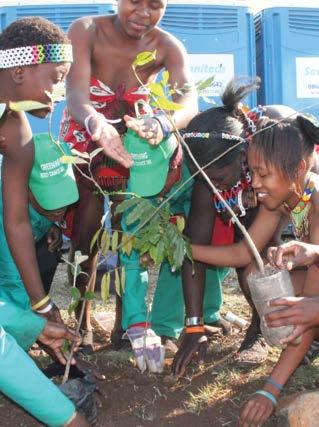



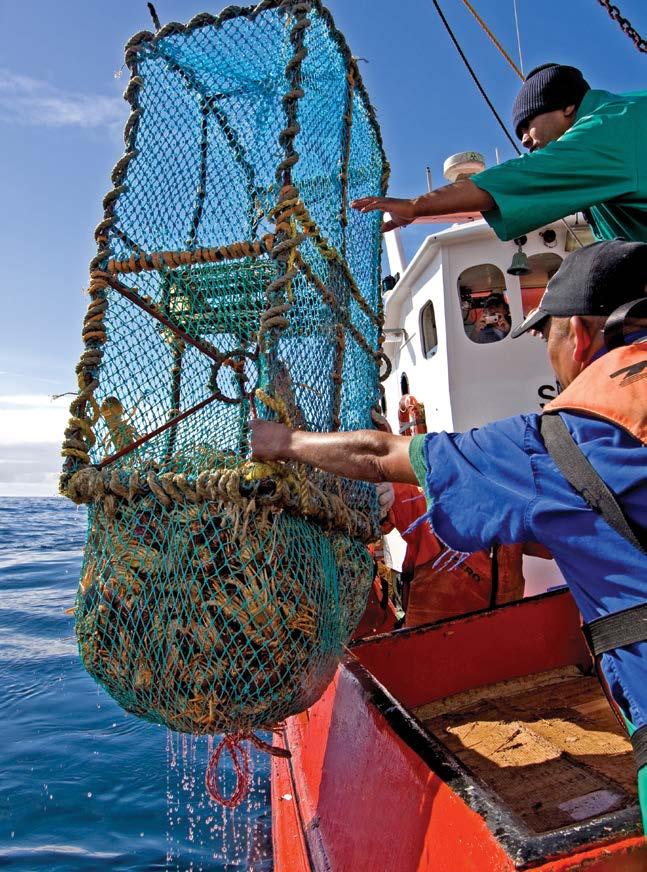
Economy GREEN journal ISSUE 56 | 2023
conserving, improving & NATURAL
ENVIRONMENTAL
Forestry, Fisheries & THE ENVIRONMENT Protecting,
RESOURCES
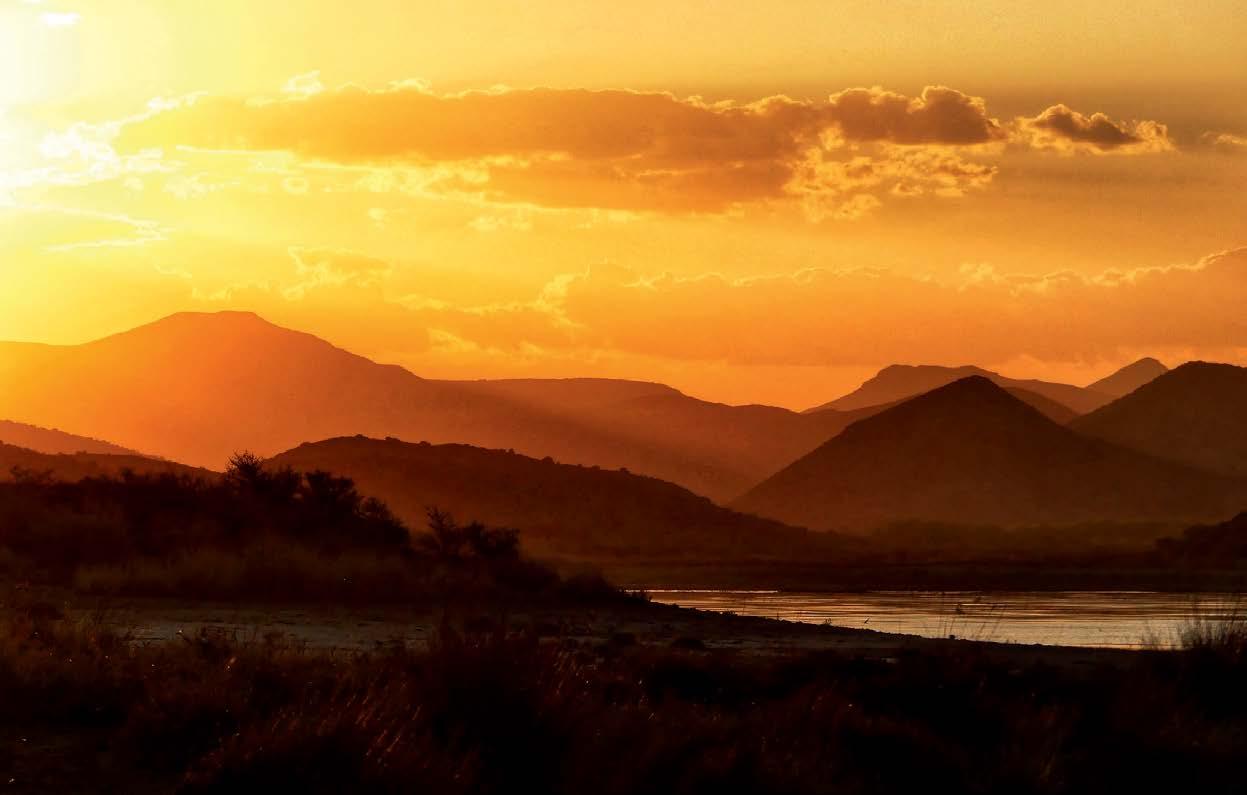


T +27 (0) 21 010 0028 E reservations@sanbona.com www.sanbona.com A QUIET MIRACLE IN THE LITTLE KAROO
RECONNECT WITH THE MAGIC OF SIMPLY BEING IN NATURE.

Conserving an ancient heritage while preserving threatened ecosystems and sensitive landscapes, Sanbona offers a sustainable eco-tourism safari to explore 58 000 hectares of unbroken Little Karoo country just 3 hours outside of Cape Town, along Route 62.
Sharing the regions unique and rich biodiversity, the reserve takes a holistic approach to offer a complete nature and wildlife experience. Malaria-free and more than just a Big Five wilderness reserve, disconnect at one of three intimate Lodges where time stands still and nature takes centre stage.
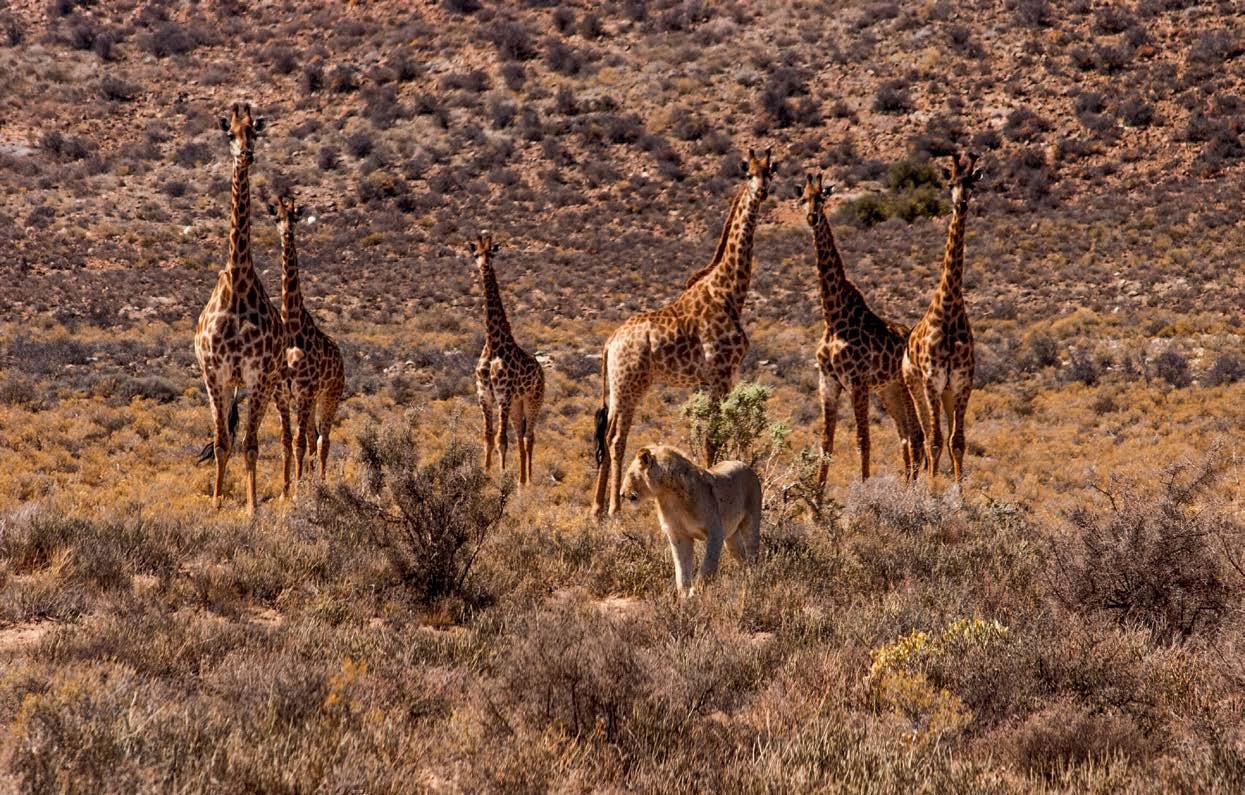


ESG | MINING WATER | ENERGY INFRASTRUCTURE





3 Economy GREEN journal 12 38 52 CONTENTS 7 NEWS AND SNIPPETS BIODIVERSITY 12 The Department of Forestry, Fisheries and the Environment (DFFE) explains how climate change weakens economic and social systems ECONOMY 14 Southern Africa’s abundant resources can fuel a successful green economy says the DFFE MINING 16 Could the metals shortage derail the energy transition? 20 Climate change and tailings management 24 The role of the Council for Geoscience in the just energy transition to low-carbon economy 27 Consequences of the Eskom tariff increases 28 Project funders looking at human rights in due diligence 30 Mining for a green economy 32 Responsible mining demands multidisciplinary teams 36 Lithium’s next big risk is grand supply plans falling short MOBILITY 38 Electric cars on the 2023 highway ENERGY 42 Long-duration energy storage 45 Lithium iron phosphate batteries: the solution to securing connectivity during loadshedding 47 Superior technology: stationary energy storage 48 Green hydrogen: how SA can capitalise on it, and why we need to do it now 52 Power to the people WASTE 54 Waste management is key to a healthy environment 57 Hazardous waste: the 11-million elephants in the room YOUTH 59 Youth play an important role in developing a green economy 61 DQS Academy SKILLS 62 Clean energy work shift 66 Green growth: FP&M Seta 68 Wind industry internship programme reflects the country’s energy sector growth
PUBLISHER’S NOTE
Dear Reader,
The economy generally and the mining sector in particular, continues to be hamstrung due to generation shortfalls leading to loadshedding and curtailments. And of course, we all know power will increase in cost by 18% in April, and in addition Eskom is seeking a structural billing change that will allow them to charge an expanded grid use fee.
The imperative to move to self-generation has never been stronger, and many large energy users are already procuring solar PV and wind-generated power from IPPs or establishing such projects at their sites. But uptake of battery energy storage at the large scale remains muted due to cost.
Batteries are expensive, but so is being curtailed, and leading IPPs are working on models to offer large-scale battery energy storage systems along with renewable generation. We expect offers to emerge in the near future where these hybrid systems can be made available at a cost/kWh that will match Eskom tariffs. This represents a massive leap forward for autonomous energy for mining and industry.
Watch this space!
Economy GREEN journal

EDITOR: Alexis Knipe alexis@greeneconomy.media
CO-PUBLISHERS: Gordon Brown gordon@greeneconomy.media
Alexis Knipe alexis@greeneconomy.media
Danielle Solomons danielle@greeneconomy.media
LAYOUT AND DESIGN: CDC Design
OFFICE ADMINISTRATOR: Melanie Taylor
WEB, DIGITAL AND SOCIAL MEDIA: Steven Mokopane
SALES: Gerard Jeffcote
Glenda Kulp
Nadia Maritz
Tanya Duthie
Vania Reyneke
Publisher
EDITOR’S NOTE
In the shift to more sustainable industries, be they in mining, manufacturing or electricity generation, South Africa needs to ensure that it, and the region, is not left behind. Southern Africa is uniquely positioned to benefit from the opportunities in the green economy.
The Department of Forestry, Fisheries and the Environment says on page 14 that this will require a paradigm shift in the approach to development and government priorities so that the contribution to greenhouse gas emissions can be mitigated and the region can begin the long road to adapting to the impacts that lie ahead.
Shocks in the oil and natural gas markets, followed by those in agricultural commodities, have dominated the headlines since sanctions were imposed on Russia. But the preoccupation with these shocks has obscured how sanctions are affecting the metal markets.
Sanctions could have longer-term consequences for everything from the sustainability of mining operations to the functioning of the manufacturing base. These supply chain disruptions are compounding the price pressures associated with the global shift to an electric economy (page 16).
There’s broad agreement that lithium supply is heading for a major increase in 2023 as a wave of expansions or new projects get up and running. The divisive issue is whether less-established producers will be able to deliver in full, defying a range of regulatory, technical and commercial challenges. Read about the unreal pace of lithium’s expansions on page 36.
Taking a step back, it is easy to dismiss the hurdles the supply chain faces when looking at exponential sales data. While it is expected that the capacity of current and future giga factories will be enough to support 36-million battery-electric cars per year by 2030, looking further upstream, particularly at lithium, there is uncertainty. What is becoming clear is the downsizing of battery capacities per vehicle while maintaining vehicle ranges will be key. Read more in Electric cars on the 2023 highway on page 38.
Lithium-ion technology does not offer long-duration energy storage capabilities, however. Our article on page 42 categorises the options for longduration energy storage excluding pumped hydro and hydrogen. Hydrogen is explored on page 48.
Enjoy this issue!
Alexis Knipe Editor
PRINTERS: FA Print
GENERAL ENQUIRIES: info@greeneconomy.media
ADVERTISING ENQUIRIES: alexis@greeneconomy.media
REG NUMBER: 2005/003854/07
VAT NUMBER: 4750243448
PUBLICATION DATE: February 2023
www.greeneconomy.media
4 All Rights Reserved. No part of this publication may be reproduced or transmitted in any way or in any form without the prior written permission of the Publisher. The opinions expressed herein are not necessarily those of the Publisher or the Editor. All editorial and advertising contributions are accepted on the understanding that the contributor either owns or has obtained all necessary copyrights and permissions. The Publisher does not endorse any claims made in the publication by or on behalf of any organisations or products. Please address any concerns in this regard to the Publisher.
WHEN WE INVEST IN INFRASTRUCTURE PROJECTS THAT ADDRESS CLIMATE CHANGE, WE BEND THE ARC OF HISTORY TOWARDS SHARED PROSPERITY
The DBSA’s Climate Finance Facility (CFF) is dedicated to increasing climate related investment in Southern Africa by playing a catalytic role using a blended finance approach. The CFF will use its debt capital, co-funded by the Green Climate Fund, to fill market gaps and target green infrastructure projects in the mining and private sector. This is part of our commitment towards the mitigation and adaptation to climate change, promoting a greener economy and driving sustainability in the mining sector.
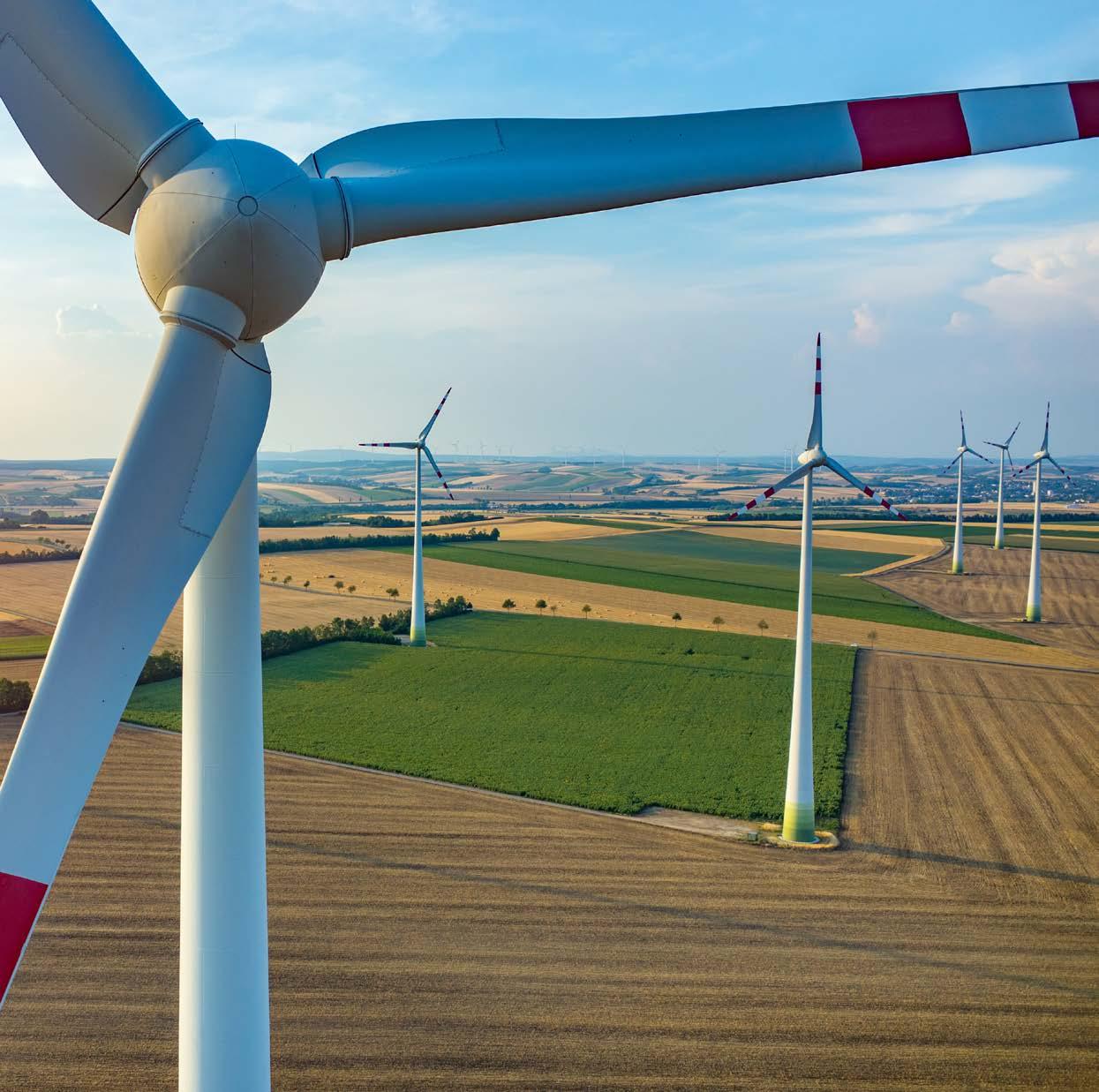
We are DBSA. Building Africa’s Prosperity
www.dbsa.org
• +27 11 313 3911
At Pele Energy Group, we are in the business of sustainability. Building and enabling the communities in the locations in which we operate. Not only do we build, own and operate renewable energy operations, but we develop the surrounding communities as well. Touws Rivier Commercial Hydroponic Farm (TCHF) is our inaugural hydroponic agri development in Touws Rivier, surrounding our CPV1 solar plant.
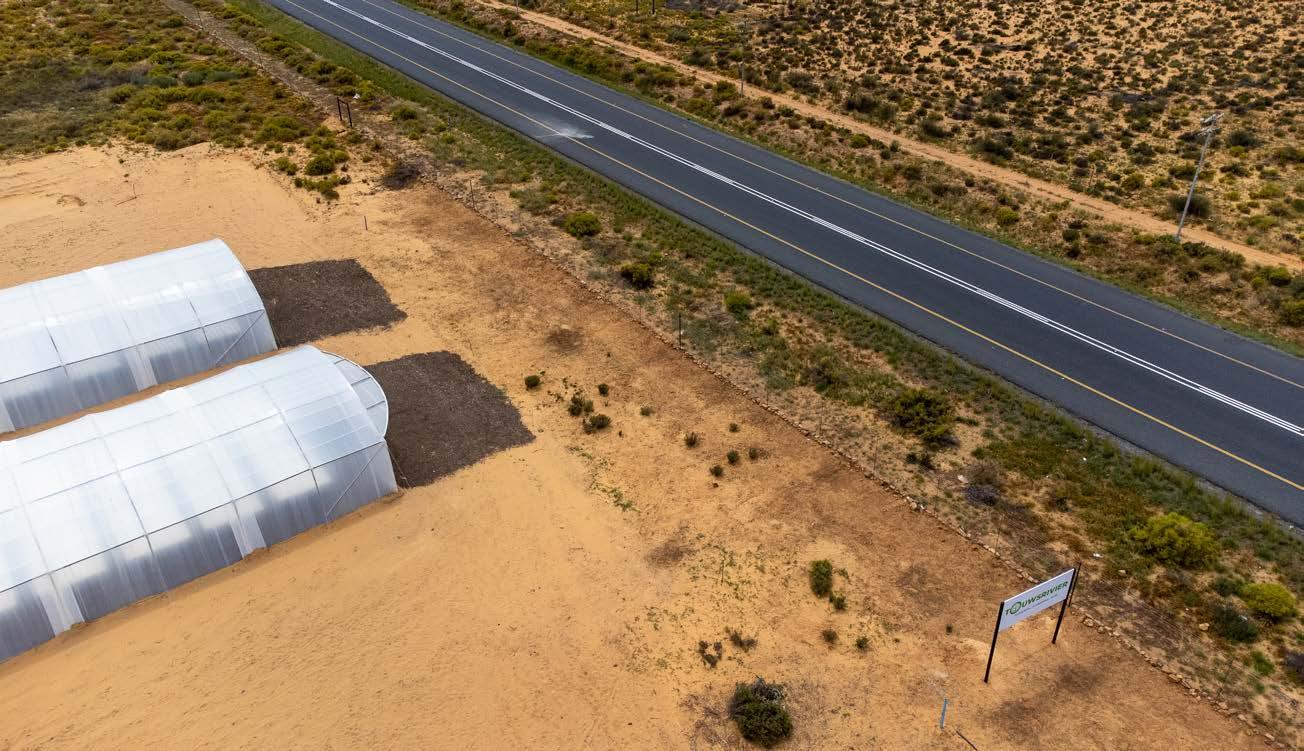
www.peleenergygroup.com

info@peleenergygroup.com Understand more about our sustainability offering on:
BALANCE OF POWER
South Africa has renewed its interest in securing electricity supply from Turkey’s Karpowership as it faces its worst-ever power outages. Karpowership could deploy its plants, which produce electricity from ship-mounted generators, to supply between 700MW and 800MW by the second quarter of 2023.
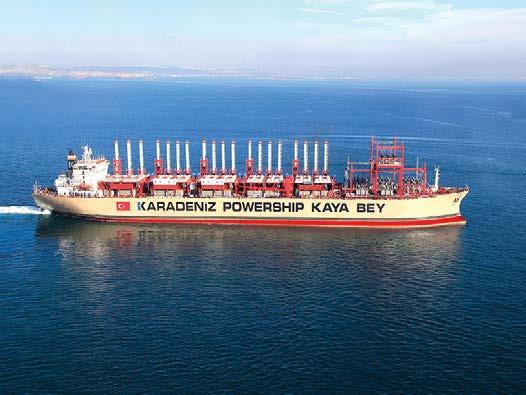
While it’s unclear what legal mechanism the government could use to secure energy from Karpowership, the power-crisis committee set up by Ramaphosa says “emergency legislation" is being considered to fast-track electricity supply.
The earlier agreement Karpowership secured as part of a 2021 emergency tender for 2 000MW of electricity has been hindered by lawsuits and environmental activists. A major objection has been that the emergency contract has a 20-year duration and also that Karpowership would supply its energy from ship-mounted gas-fired power plants that would emit carbon and disrupt ocean life. The Department of Minerals and Energy supports the project. Karpowership recently refiled an appeal and will get a decision on its application to proceed with the projects from the Department of Forestry, Fisheries and the Environment by March this year.
[Bloomberg, January 2023]
CORRUPTION, SABOTAGE AND DEBT
The South Africa Electricity Generation Industry 2022 report on the generation of electricity in South Africa includes comprehensive information on the extent of the crisis, actions and projects aimed at relieving it and the sources of generation that are planned. There is information on the state of the sector, the role of Eskom and the effect of its financial and operational crisis and renewable energy and embedded generation developments.
Electricity generation in South Africa
South Africa’s electricity crisis has worsened as power cuts, which began in 2007, escalated in 2022. The percentage availability of South Africa’s total installed capacity of 53.7GW at the end of 2021 fell to below 60% in October 2022 as Eskom’s coal-fired power stations continue to break down, resulting in power cuts to prevent the electricity grid from collapsing. The crisis has been compounded by Eskom’s debt of about R400-billion and the need for the country to transition from coal to renewable energy. Corruption, sabotage, increasing unpaid debt of municipalities and a loss of skills threaten Eskom’s viability.
AIR LIQUIDE AND SASOL GO LARGE
The two companies have signed two Power Purchase Agreements (PPA) with Enel Green Power for the long-term supply of a total capacity of 220MW of renewable power to Sasol’s Secunda site, where Air Liquide operates the biggest oxygen production site in the world. These PPAs are the first results of the Request for Proposal (RFP) process launched jointly by Air Liquide and Sasol in 2021, for the procurement of a total capacity of 900MW of renewable energy. They will significantly contribute to the decarbonisation of the Secunda site, and to the targeted reduction by 30% to 40% of the CO2 emissions associated with the oxygen production by 2031.
Within the framework of these agreements with Air Liquide and Sasol, two local majority owned wind projects will be created by Enel Green Power, the Enel Group subsidiary dedicated to the development and management of power generated from renewable resources worldwide. The 220MW wind-powered renewable electricity production capacity is scheduled to be operational in 2025.
“Sasol and Air Liquide’s efforts to procure a total of 900MW of renewable energy to decarbonise our respective operations at Secunda is another step towards Sasol’s aim to procure 1 200MW of renewable energy capacity from IPPs by 2030, representing one of the largest renewable energy procurement programmes from the private sector in South Africa”, says Priscillah Mabelane, executive vice president of Sasol’s energy business. “Our work in the renewable energy space to secure PPA partners demonstrates the real progress Sasol is making towards its decarbonisation and ultimately, the development of a green economy.”
Sasol South Africa and Msenge Emoyeni Wind Farm signed a long-term contract for the supply of 69MW of renewable energy to the company’s Sasolburg site. The PPA between Sasol and Msenge is the first of several agreements Sasol intends to finalise soon as it secures the renewable energy supply required to produce green hydrogen.
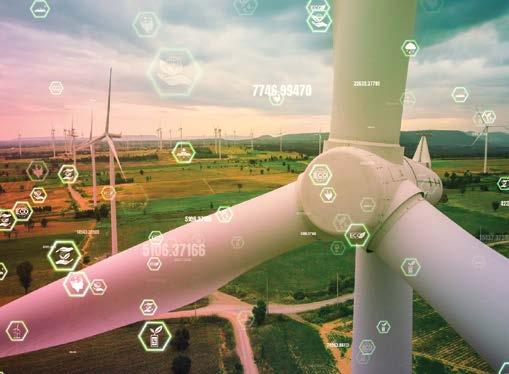
Sasol is leading South Africa’s just energy transition and the development of a hydrogen economy. The production of green hydrogen, using renewable energy, is key to unlocking this opportunity. The renewable energy generated by Msenge will enable Sasol to produce green hydrogen that can be supplied to customers to enable them to decarbonise their operations or will be utilised within Sasol’s own operations to produce sustainable products such as ammonia or methanol.
Sasol will progressively shift away from coal and towards gas as a transitionary feedstock, and then to green hydrogen and sustainable carbon over the longer term.
7 NEWS & SNIPPETS
The National Energy Regulator of South Africa (NERSA) ensures the orderly development of the energy sector, mainly through licensing, setting and approving of prices and tariffs, compliance monitoring and enforcement, and dispute resolution in the electricity, piped-gas and petroleum pipelines industries.
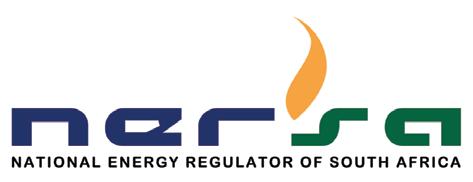






NERSA endeavours to be more innovative and agile in ensuring that we continue to make a valuable contribution to the socio-economic development and prosperity of the people of South Africa, by regulating the energy industry in accordance with government laws, policies, standards and international best practices in support of sustainable development.
NERSA is a regulatory authority established as a juristic person in terms of section 3 of the National Energy Regulator Act, 2004 (Act No. 40 of 2004).

NERSA’s mandate is to regulate the electricity, piped-gas and petroleum pipelines industries in terms of the Electricity Regulation Act, 2006 (Act No. 4 of 2006), Gas Act, 2001 (Act No. 48 of 2001) and Petroleum Pipelines Act, 2003 (Act No. 60 of 2003).

NERSA’s mandate is further derived from written government policies and regulations issued by the Minister of Mineral Resources and Energy. NERSA is expected to perform the necessary regulatory actions in anticipation of and/or in response to the changing circumstances in the energy industry.

The Minister of Mineral Resources and Energy appoints Members of the Energy Regulator, comprising Part-Time (Non-Executive) and Full-Time (Executive) Regulator Members, including the Chief Executive Officer (CEO). The Energy Regulator is supported by staff under the direction of the CEO.
@NERSAZA @NERSAZA
Kulawula House, 526 Madiba Street, Arcadia, 0083 PO Box 40343, Arcadia, 0007



Tel: 012 401 4600 | Fax: 012 401 4700
Email: info@nersa.org.za
Website: www.nersa.org.za
Thembani Bukula Chariperson
Zandile Mpungose Deputy Chairperson
Nomfundo Maseti Full-Time Regulator Member : Piped-Gas
Muzi Mkhize Full-Time Regulator Member : Petroleum Pipelines
Adv Nomalanga Sithole Chief Executive Officer and Full-Time Regulator Member
Nhlanhla Gumede Full-Time Regulator Member : Electricity
Thembeka Semane, Part-Time Regulator Member
Precious Sibiya, Part-Time Regulator Member
Fungai Sibanda, Part-Time Regulator Member
ESKOM ON LOADSHEDDING
Eskom substantiates that the high levels of loadshedding is being implemented to ensure the appropriate reserve margins are maintained to manage the risk of a blackout, and that the outages do not indicate an approaching blackout.


Eskom is grappling with deep structural and maintenance problems in its current and ageing fleet of generators, which are on average 45 years old (they have a 50-year operating life). Adding capacity is the only possible solution to the blackouts.
The shortfall is currently estimated at 4 000MW to 6 000MW of generation capacity. This supply deficit can only increase as the current fleet’s performance continues to deteriorate.
Eskom states that it is struggling to execute maintenance of the power station fleet to improve reliability of the generating units and to improve the energy availability factor. Planned maintenance, currently at 6 022MW (approximately 11% of installed capacity), is optimised during summer and tapers off towards the high-demand winter period.
The plan is to return 6 000MW of generating capacity onto the grid during the next 24 months. Six power stations have been targeted with a detailed recovery plan for each one.
Medupi Power Station, which suffered a generator explosion during August 2021, is anticipated to return to service during September 2024. Eskom continues to explore options to reduce the time to repair the unit.
The Kusile Unit 1 flue duct (chimney) failed in October 2022 This incident compromised the adjacent units’ flue duct bends, making all inoperable. This removed a total of 2 160MW from the power system. Temporary flues for the units will be constructed to help return the units to service while repairing the common chimney. The construction of the temporary stack will take up to 12 months. Together, the Kusile units, combined with Medupi 4, are responsible for the shortfall of approximately 2 900MW in generation capacity – equivalent to three stages of loadshedding.
Koeberg Nuclear Power Station will continue operating at half of its 1 800MW generating capacity for the next 15 months. Unit 1 is currently on a regular refuelling and maintenance outage that will include the replacement of the three steam generators as part of the requirement and preparation of the unit for long-term operation. It is anticipated the unit will return to service during June 2023.
Koeberg Unit 2 will undergo a similar outage starting in September 2023. It is anticipated this will take approximately six months to execute. Upon successful execution, the combined investment in both Koeberg units will secure 1 800MW of generation capacity for a further period of 20 years.
The gas air heater fire of Unit 5 of Kusile removed a possible 720MW from the grid. Efforts are being made to expedite the repairs and to bring the unit online within the shortest space of time. It is anticipated the unit will be synchronised to the grid during July 2023.
Together, these long-term projects and breakdowns have set Eskom back 4 500MW of generation capacity, equivalent to five stages of loadshedding.
ENERGY ACTION PLAN UPDATE
The Energy Action Plan was developed through extensive consultation and endorsed by energy experts as providing the best and fastest path towards energy security. National Energy Crisis Committee (NECOM) has since been established to coordinate government’s response and ensure swift implementation of the plan.
Steps taken include:
- Schedule 2 of the Electricity Regulation Act has been amended to remove the licensing requirement for generation projects, which will significantly accelerate private investment.
- Since the licensing threshold was first raised to 10MW, the pipeline of private sector projects has grown to more than 100 projects with over 9 000MW of capacity. The first of these largescale projects is expected to connect to the grid by the end of this year.
- NECOM has instructed departments to cut red tape and streamline regulatory processes for energy projects, including reducing the timeframe for environmental authorisations to 57 days from over 100 days previously; reducing the registration process from four months to three weeks; and ensuring that grid connection approvals are provided within six months.
- Project agreements for 19 projects from Bid Window 5 and six projects from Bid Window 6 of the renewable energy programme, representing 2 800MW of new capacity. These projects will soon proceed to construction.
- A new Ministerial determination has been published for 1 4771MW of new generation capacity from wind, solar and battery storage to accelerate further bid windows.
- An additional 300MW has been imported through the Southern African Power Pool, and negotiations are underway to secure a potential 1 000MW from neighbouring countries starting this year.
- Eskom has developed and launched a programme to purchase power from companies with available generation capacity through a standard offer. The first contracts are expected to be signed in the coming weeks.
- A team of independent experts has been established to work closely with Eskom to diagnose the problems at poorly performing power stations and take action to improve plant performance.
Six power stations have been identified for particular focus over the coming months through a comprehensive Generation Recovery Plan, with oversight from the new Eskom board. While the power system remains constrained in the short term, these measures will reduce the frequency and severity of loadshedding as new capacity is brought online.
Further updates will be provided on a regular basis regarding progress in implementing the Energy Action Plan.
9
NEWS & SNIPPETS
SOUTHPAN SOLAR PLANT
Globeleq, the leading independent power company in Africa, has completed a $71-million (ZAR1.2-billion) senior debt restructuring of its 31MW Soutpan Solar Power plant in Limpopo Province, one of the first solar power plants built under South Africa’s Renewable Energy Independent Power Producer Procurement programme. By lowering the cost of debt for the project, the refinancing allows for a significant reduction in wholesale electricity prices from the plant, creates a more efficient capital structure enabling release of funds for shareholders to reinvest in the power sector and accelerates equity distributions to Soutpan’s community and BEE shareholders.

Standard Bank Limited led the restructuring of the debt, alongside the project’s original lender, Vantage Green X Fund. Soutpan started operations in 2014 and Globeleq acquired a majority interest in the plant in 2019. Since then, Globeleq has managed the full scope of operations and maintenance and has implemented a plan to enhance performance, efficiency, and safety at the plant.
Globeleq’s CEO, Mike Scholey says, “The successful Soutpan restructuring is an important transaction which will save Eskom more than ZAR160-million over the remaining ten years of the agreement. This is the fourth renewable project that Globeleq has restructured under the Department of Mineral Resources and Energy’s IPP Office Refinancing Protocol and further demonstrates our commitment to supporting initiatives that benefit energy users and encourage investment while loadshedding continues.”
“Standard Bank is delighted to support Globeleq and underwrite Soutpan in the restructure of its debt which has allowed for a tariff saving to Eskom and ultimately the South African consumer.
Standard Bank has been involved with Soutpan as Mandated Lead Arranger and Hedge Provider since 2012 when Soutpan started construction. Our longstanding partnership and journey together demonstrates Standard Bank’s commitment to the renewable sector and our client relationships,” says Sherrill Byrne, Executive Energy, and Infrastructure Finance.
LOADSHEDDING AFFECTS WATER
Loadshedding is not just about the inconvenience of being without lights or television and the means to cook a meal, it negatively impacts our ability to earn a living, seek reliable healthcare, have confidence in the cold chain through which most of our food is moved, and – as recent news reports highlight – trust the quality of the water in our taps.
The City of Cape Town has warned of water supply shortages related to loadshedding while the Breede Valley Municipality urged residents to boil water as electricity outages hit its water and waste-water treatment plants hard.
Johannesburg Water has said that many of its customers in higherlying areas experienced low pressure to no water during load shedding and asked those in lower-lying areas to use water sparingly to assist with the recovery of the affected infrastructure.
Similarly, the City of Tshwane and uMgungundlovu District Municipality in the KwaZulu-Natal Midlands have explained that their reservoirs rely on a continuous flow to maintain levels and be prepared for outages. That continuous flow relies on the pump stations running
to move the water and the pump stations rely on Eskom’s grid to provide the power.
Exacerbating water quality challenges in KwaZulu-Natal are the floods in April 2022. These damaged eight sewerage treatment plants and resulted in millions of litres of untreated sewage spilling into the beaches, rivers, harbours and ocean in and around Durban. Only some of the infrastructure has been repaired, and Durban’s waters are still contaminated.
“The lack of water in our taps and questionable quality of what water there is will see more and more South Africans turning to bottled water for drinking and cooking,” said South African National Bottled Water Association (SANBWA) CEO, Charlotte Metcalf.

“While this is good news for the industry as a whole, for an organisation like SANBWA whose members comply with a stringent standard that benchmarks favourably against others found globally, it also rings alarm bells.
“This is because the growth will likely attract many new entrants into the market, but not all of these will comply with the strict standards required the FC&D Act, the legislation that regulates all enterprises in South Africa packaging water for sale to the public.
“In addition, fly-by-night operators think nothing of bottling waters from unsuitable sources under unsanitary conditions and into packaging that might not even be sterile.”
10 NEWS & SNIPPETS
Charlotte Metcalf South African National Bottled Water Association (SANBWA) CEO.
“One way consumers can protect themselves is to look for the SANBWA logo on a bottle of water. This guarantees that the product is genuine natural mineral or spring water, and that the source is sustainable, she said.
Metcalf suggested you take the following measures if you suspect load shedding is negatively impacting your water supply:
• Boil the water from your tap and allow it to cool before using it to drink and wash salad ingredients.
• If you opt to make use of a home filtration system make certain that you select one that delivers what the brochure or website promises as recent research has highlighted that not all systems are created equal nor live up to their marketing messages.
• Only purchase bottled water featuring the SANBWA logo on the bottle because that logo guarantees that the water in that bottle comes from uncontaminated sources and that the bottling facility is hygienic and operated according to legislation and good manufacturing practices.

• Avoid buying water from retailers who fill new containers in-store – this is an illegal practise as the legal requirements to bottle a food product cannot be adhered to. They are mostly filling from a municipal source thus using the limited available water during loadshedding.
• Refuse the restaurant’s offer of water in a jug or its own ‘bottled water’. These bottles are usually filled using a countertop filling system connected to the municipal source, which may or may not be contaminated. Further, there is no guarantee the bottles and the ‘Grolsch’ cap they are typically closed with have been properly cleaned and sanitised before being filled. The moment water is pre-filled it needs to conform with packaged water legislation. In the restaurant filling set-up this is not possible.
MICROSOFT BUILDS ENERGY SUPPLY CHAIN

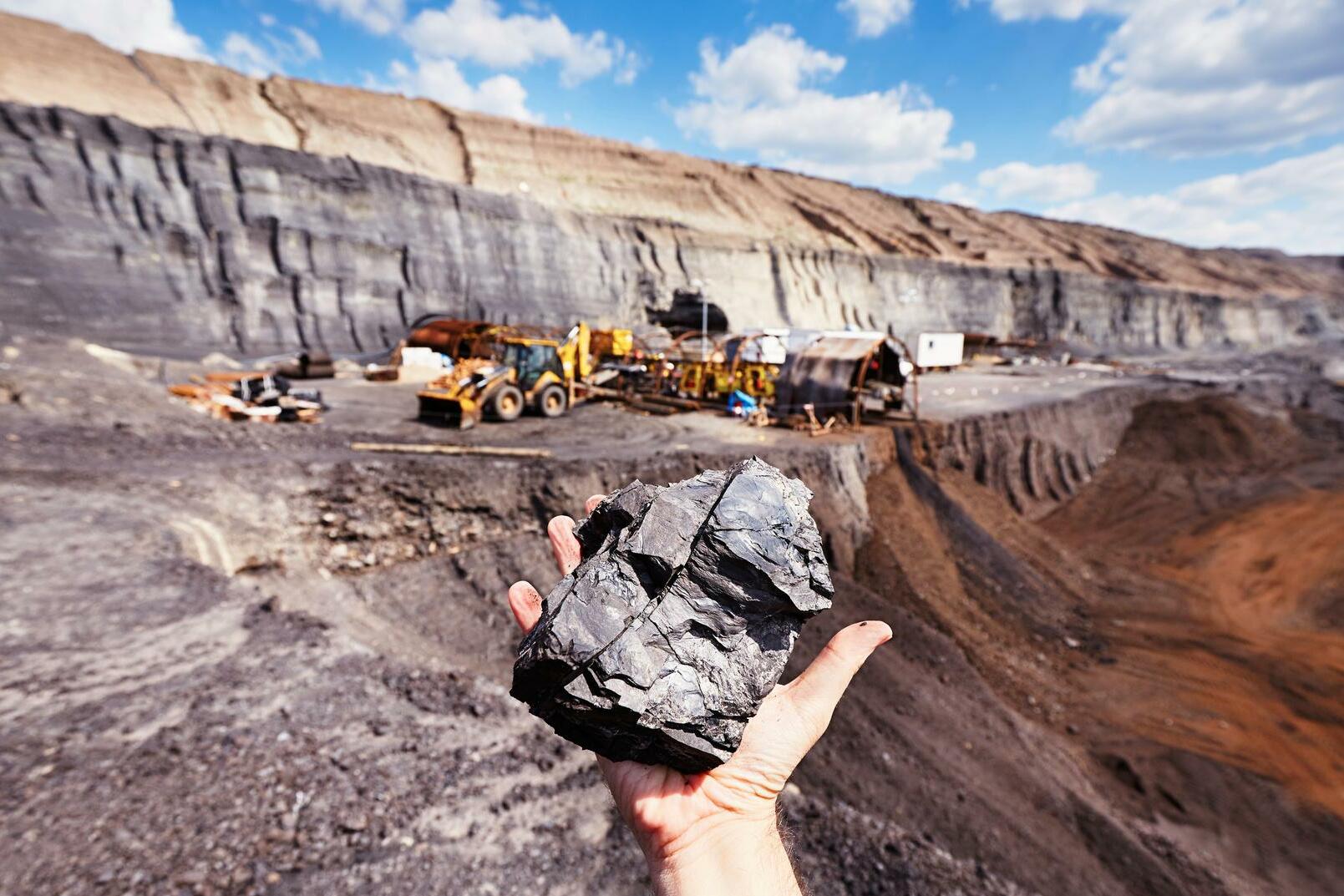
Qcells, a global solar leader investing in building a US solar supply chain, and Microsoft, a global technology company with a commitment to be carbon negative by 2030, are partnering to enable a strong supply chain for new renewable electricity capacity projected to require at least 2.5GW of solar panels and related services — equivalent to powering over 400 000 homes.
Qcells, owned by Hanwha Solutions headquartered in Seoul, will work with Microsoft to develop solar projects as well as provide panels and engineering, procurement and construction (EPC) services to selected solar projects Microsoft has contracted for through power purchase agreements (PPAs).

Microsoft has committed to purchasing renewable energy with a goal of achieving 100% coverage of electricity consumption with renewable energy by 2025. Microsoft is extending its sustainability activities to support domestic production of green energy equipment in the regions it operates globally. Microsoft is supporting Qcells’ solar products, including those manufactured domestically, to bring more renewable energy to the grid. Qcells is the only company in the US that will have a complete solar supply chain and provides one-stop clean energy solutions. This alliance is the first time a company that procures energy is working directly with a solar supplier to adopt clean energy on a big scale.
IAS is a multi-industry service provider that leverages drone technology to deliver actionable data to drive business productivity

As a fully licensed and insured drone operator, we provide a professional end-to-end service from data capture to advanced analytics and reporting

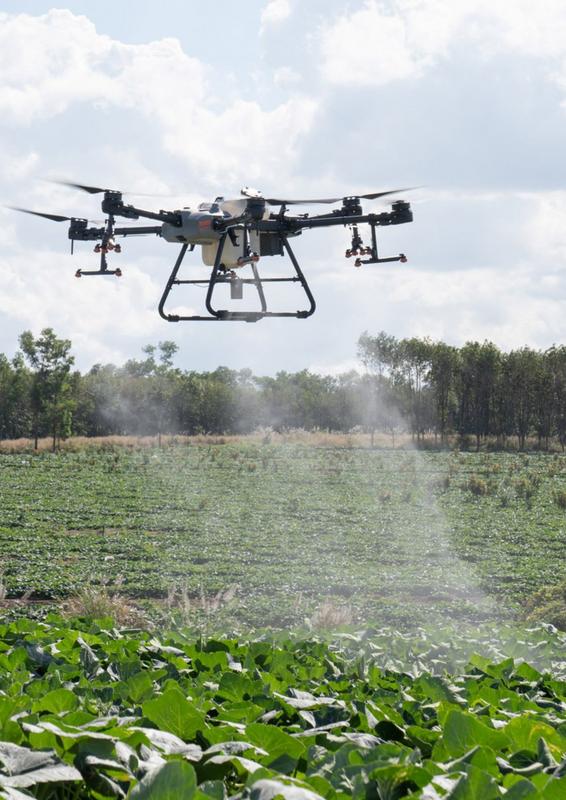
I n t e l l i g e n t & I n s i g h t f u l D r o n e S e r v i c e s f o r y o u r I n d u s t r y A G R I C U L T U R E I N S P E C T I O N S E C U R I T Y 0 2 1 0 0 1 0 4 4 9 w w w . i a s y s t e m s . c o . z a i n f o @ i a s y s t e m s c o z a S U R V E Y
NEWS & SNIPPETS
CLIMATE CHANGE weakens ECONOMIC and SOCIAL SYSTEMS
Climate change, biodiversity loss and pollution threaten the environment on which we depend, and they weaken our economic and social systems. Concern for the environmental crisis is no longer confined to multilateral institutions or the non-governmental sector.
BY THE DEPARTMENT OF FORESTRY, FISHERIES AND THE ENVIRONMENT
In 2022, the World Economic Forum’s annual Global Risks Perception Survey identified climate action failure, extreme weather events, biodiversity loss and ecosystem collapse as the top three of the top 10 global risks by severity over the next 10 years.
In the context of these interlinked global risks, the role of scientific research in promoting evidence-based decision-making becomes more important than ever before. Equally important is the role of scientific research in finding innovative solutions to the existential challenges facing mankind.
It is through cutting-edge scientific research that the agenda can be set for future action to mitigate and adapt to climate change and protect our environment. The year 2022 was an important year for the Department of Forestry, Fisheries and the Environment, as progress was made in developing a White Paper on the Conservation and Sustainable Use of South Africa’s Biodiversity.
This measure and the Game Meat Strategy that was published for implementation present a clear understanding of government’s intentions and aspirations as it promotes the sustainable use of the

12 BIODIVERSITY
country’s natural heritage to enable and facilitate transformative socioeconomic development while ensuring that biodiversity is conserved for present and future generations. The overriding message is that the actions taken today must not only secure ecological sustainability into the future but must also promote justifiable economic and social development to reduce poverty, inequality and unemployment, especially for our rural communities.
The White Paper, which is expected to be adopted for implementation this year following a public participation process, focuses on a future in which all South Africans live in harmony with nature, a future in which our biodiversity sector is transformed, and a future in which rural communities benefit from access to our rich natural environment as the country’s biodiversity is conserved. It also aims to maintain and restore ecological integrity alongside setting out important principles to guide future policy, legislation and decisionmaking across the sector.


Partnerships are key to unlocking the full potential of the biodiversity sector. By doing this, the Department can support training and capacity building programmes alongside the development of infrastructure, the donation of wildlife to emerging game farmers, ensuring that indigenous knowledge holders benefit from the use of natural products, and securing a means to attract investment to the sector.

At present, seven of the eight financial solutions to catalyse investment in the biodiversity sector and retain revenue in protected areas are being supported by the BIOFIN programme in South Africa. These solutions were initiated in the 2021/22 financial year and include activating institutional governance and support mechanisms, such as the Finance Solution Project Management Committee and task teams for each finance solution.
An international decision that affects the growth of the biodiversity economy and the conservation estate was the adoption of the Kunming-Montreal Declaration at the 15th Conference of Parties to the Convention on Biological Diversity at the end of 2022. This Conference had also adopted the Global Biodiversity Framework, a landmark agreement for nature which sets goals aimed at halting biodiversity loss, the extinction of species and protecting the rights of local and indigenous communities through fair access and benefitsharing of genetic resources.
Through the Game Meat Strategy, there is acknowledgement of the significant contribution made by the diversity of South Africa’s wildlife models, and the potential for wildlife businesses to drive critical elements of the value chain. It supports the move from an informal industry, towards larger commercial ventures that provide for economies of scale.




In the last quarter of 2022, the Department launched the Biodiversity Sector Investment Portal to link investors with bankable projects as a means of growing the biodiversity economy. Development of the Investment Portal by the Department was supported the United Nations Development Programme (UNDP) and the Biodiversity Finance Initiative (BIOFIN) and promotes investment opportunities in the sector while encouraging the development of connections between communities and investor-ready and bankable intermediaries that will ensure the sector is able to contribute to the growth of the economy, as well as the wellbeing of society while conserving our country’s rich biodiversity.
By encouraging investment into businesses that fall within the broader biodiversity economy, much-needed economic and social development can be promoted. It can also secure the country’s critical natural capital.
A key decision of the Kunming-Montreal declaration was, however, a proposal to increase finance to developing countries to drive sustainable investment in reversing the loss of biodiversity as well as prevention of future loss for the planet through implementation of the framework.
While ambitious in its expression of goals and targets, the decision falls short in respect of ambition on means of implementation, including resource mobilisation to close the financing gap of $700-billion, capacity building, technology and technology transfer. This commitment will go some way in assisting developing countries address the burden climate change mitigation and adaptation will place on already vulnerable economies.
13 BIODIVERSITY
Partnerships are key to unlocking the full potential of the biodiversity sector.
Southern Africa’s ABUNDANT RESOURCES can fuel a successful GREEN ECONOMY
The latest climate science documented in the Sixth International Panel on Climate Change Report released in April 2022 documents the physical risk that climate change poses to southern African countries and cautions that its impact is already denting economic growth.
 BY THE DEPARTMENT OF FORESTRY, FISHERIES AND THE ENVIRONMENT
BY THE DEPARTMENT OF FORESTRY, FISHERIES AND THE ENVIRONMENT
The report explains the Earth’s average surface temperature has already warmed by over one degree centigrade since preindustrial times. Furthermore, southern Africa is warming at twice the average global rate and the report estimates temperature increases of over two degrees centigrade.
What is known with certainty is that climate change is already part of the lived reality of millions: floods, severe storms, drought, heatwaves and uncontrolled fire impact in the South African region and has already threatened lives, agricultural production, water security, tourism, health, infrastructure, ecosystems and biodiversity.

In addition to the physical risk, southern African economies also face a transition risk associated with climate change. As the major economies transition to new green technologies they will seek to protect their investments by introducing trade barriers to goods and services produced in economies with a higher carbon footprint. The South African economy, with its reliance on coal-fired energy generation, is most at risk.
In the shift to more sustainable industries, be they in mining, manufacturing or electricity generation, South Africa needs to ensure that it, and the region, is not left behind. Southern Africa is uniquely positioned to benefit from the opportunities in the green economy. This will require a paradigm shift in the approach to development and government priorities so that the contribution to greenhouse gas
emissions can be mitigated and the region can begin the long road to adapting to the impacts that lie ahead.
Because government is aware that climate change affects all sectors of society, business and government, ways are being found to develop a whole-of-society response that will allow all interested parties and stakeholders to participate.
In this regard, the Presidential Climate Commission, representing government, business, organised labour and civil society can now boast its role in developing South Africa’s revised Nationally Determined Contributions, concluding the Just Transition Framework and researching pathways for transitioning several sectors of South Africa’s economy severely impacted upon by climate change.
Besides the Commission, overarching framework legislation will be important for SADC countries to guide all levels of government, multiple departments and different stakeholders within a common climate change response strategy.
South Africa’s experience has shown that one can only achieve so much on a voluntary basis. In developing countries with limited budgets and infinite need, and without a regulatory environment, climate priorities always fall lower down the agenda. Thus the importance of the Climate Change Bill presently before Parliament.
The Paris Agreement to which the SADC countries are signatories requires participating governments to take three measures to deal
14
ECONOMY
with climate change are: mitigation which contributes to the reduction of greenhouse gases; adaptation to the realities of climate change and means of implementation which translates to allocating financial and technical resources to execute climate change responses.



Thus the importance of the decisions taken at the international climate talks in Egypt at the end of 2022, especially the historic decision to establish a fund to assist developing countries to respond to loss and damage caused by climate change. South Africa had emphasised the importance of the need for the fundamental transformation and modernisation of the global financial architecture and reform of the multilateral development banks to make them fit-for-purpose in supporting sustainable development and just transitions.
The final COP27 outcome frames the climate crisis and its solutions in terms of the sustainable development goals and just transitions, leaving no-one behind, and the need for broader financial sector reform to achieve these.
The call for multilateral consensus on making financial flows consistent with pathways towards low emissions and climate resilient development could open new investment opportunities in Africa for clean energy investments, critical for addressing energy poverty on the continent. The climate talks have also seen agreement amongst parties to accelerate work on reducing vulnerability of societies due to climate change impacts.
Within SADC, the adoption of the regional Climate Change Strategy and Action Plan (2020-2030) in 2021 in identifying key sectors that can contribute to the transition to a low-carbon, climate-resilient future, acknowledges that the region’s forestry resources have the potential to act as significant carbon sinks. This is but one of the sectors being considered in SADC’s planning towards the greening of the regional economy in the hope of meeting development objectives and mainstreaming climate change adaptation.

Southern Africa has abundant resources that must be employed in our transition to a low-carbon future and the development of a successful green economy.

15 ECONOMY
Southern Africa is uniquely positioned to benefit from the opportunities in the green economy.
Could the METALS SHORTAGE derail the ENERGY TRANSITION?


As disruption in energy supplies continues to reverberate throughout the world’s economies, another equally insidious, if less conspicuous, disruption is unfolding: shortages of key basic and precious metals.
BY KEARNEY CONSULTING*
16 MINING
Spasms in the oil and natural gas markets, followed by those in agricultural commodities, have dominated the headlines since sanctions were imposed on Russia in 2022. But the preoccupation with these shocks has obscured how sanctions are affecting the metal markets – in particular, base and precious metals.

Whether they involve spare parts or new technologies, sanctions could have longer-term consequences for everything from the sustainability of mining operations to the functioning of the manufacturing base. Apart from exacerbating Covid-related disruptions, these supply chain disruptions are compounding the price pressures associated with the global shift to an electric economy.
THE LONG REACH OF SANCTIONS
Earlier in 2022, just as the world economy was rebounding from Covid and production operations were resuming, commodity prices spiked but soon began to stabilise. Then the Ukraine-Russia conflict erupted, triggering sanctions unprecedented in scale and speed on one of the world’s biggest exporters of raw materials. By early November 2022, Russia had been hit with more than 12 000 sanctions – four times the number imposed on the next most penalised country, Iran.
Russia’s biggest commodity players may be the most prominent of the sanctioned entities, but the sanctions affect far more than the sale of their commodities. Consumers, primarily those in Europe – the region that accounts for about half of the sanctions – have also felt the effects as many European and US companies in multiple industries suspended their Russia operations. Among those companies are the leading logistics companies – the likes of Maersk, MSC, and CMA CGM – which transport solid commodities throughout the globe, from raw materials to semi-finished products (such as rolled steel and copper rods) to finished products (such as wire).
Supply bans pinch the supply of spare parts for aircraft and heavy machinery, including hauling and loading equipment, tractors, assembly line machinery and drilling equipment. The resulting crunch in equipment availability is already dampening activity across many sectors, from manufacturing and construction to agriculture (itself at risk, with the farming disruptions in Ukraine and global fertiliser shortages).
REROUTING WOES

Direct export bans on steel imports (into the European Union) and crude oil (into the US) have sparked price increases and forced a partial redirection of exports. But other, less direct sanctions have equally deep and often longer-lasting impacts. For example, the export restrictions that have prompted companies such as Maersk to suspend operations have forced shippers to rely on inland channels – that is, where such channels exist.
The EU and US bans on Russian non-carbon commodities have made China and other Asian markets the default main importers of Russian raw materials (see figure 1). But that works only as far as infrastructure allows. In fact, the existing infrastructure is insufficient for handling the redirection of raw materials in their full volumes.
Rail channels have historically lacked spare capacity, and that’s unlikely to change anytime soon. Moreover, the capacity at marine ports seems to be inadequate for current volumes. In addition, ports need to be situated in a reasonably direct path to those alternative destinations. But infrastructure isn’t the only obstacle: the suspension of foreign shipping operations has triggered a worldwide container shortage.

17 MINING
Demand for the commodities that are essential for an electrificationand renewable-energy-based economy is growing.
Figure 1. Amid EU and US bans, Russia’s non-carbon commodities will be redirected to Asia as much as the infrastructure will allow. Export channels (estimated capacity)1.2
Morport, Rosmorport, FESCO, Russian Railways; Kearney Analysis
IMPLICATIONS FOR IMPORTS
Beyond affecting the export of commodities, imposed sanctions have also complicated the importation of goods along with providing some professional services, related to commodity manufacturing (such as exploration, deposit modelling and many others), which in turn can jeopardise the very production of those exports. For example, most of the mining equipment used in Russia is made in the US or Europe – equipment that includes not only spare parts needed to maintain current operations, but also new technologies that deliver efficiency and safety improvements. While a complete discussion of applicable sanctions rules is beyond the scope of this article (and has many complexities), it appears that at least some companies have responded to the new rules by importing equipment by a more circuitous route, crossing at least two additional borders, to reach mine sites in Russia.
As a result, the reliability of current operations is put at risk, and new projects are either difficult to launch or else put on hold. Aging infrastructure poses environmental risks, as we saw with the 2020 diesel spill at Norilsk Nickel, Russia’s worst-ever Arctic environmental disaster. China may have been able to fill the gap, but ongoing Covid-related shutdowns and supply chain interruptions have made that difficult, if not impossible.
Meanwhile, the financial sanctions recently imposed by the UK have even prompted merger talks between Norilsk and Rusal – two otherwise unlikely partners – to bolster their stability.
THE METALS CRUNCH
So, what do these sanction-induced shocks mean for metals?



Base metals. Since early 2022, the five base metals that Russia produces have experienced sharp price increases (see figure 2). Continued supply disruptions are likely to keep prices climbing for some of them. Nickel (for which Russia accounts for roughly 10% of world output) is likely to see significant long-term increases, thanks to the growing demand for electric vehicles (EVs) and non-fossilbased energy and the metal’s importance in electronics and steel production. Ironically, EV demand is being fuelled by the commodity disruption that the sanctions sparked, leading to a sharp increase in fuel prices worldwide. Aluminium and copper (for which Russia produces 5% and 4%, respectively, of global output) are expected to experience moderate price increases. Apart from their many industrial applications, they too figure largely in EV production and
eco-friendly materials applications. The price of iron and zinc (for which Russia accounts for 4% and 2%, respectively, of global share) will likely stabilise, as the EU and US economies slow-down.
Because Russia produces a relatively minor share of these base metals, markets will rebalance or at least will be affected mostly by other factors rather than limitation on imports. The output that cannot be rerouted because of the logistics limitations will create some market deficit, but it is not expected to cause serious long-term consequences.
18
Figure 2. Base metals show similar pricing patterns since the start of 2022: a sharp rise, followed by a market correction amid fears of a global recession.
NYMEX, LME, Bloomberg, US Geological Survey; Kearney Analysis
MINING
Precious metals. The longer-term picture for precious metals, however, is a different story. So far, the effect on precious metal prices has been modest, and price volatility has been much lower than that of base metals but most likely not for much longer (see figure 3). Given the overall significant portion that Russia accounts for and the role these commodities play in the evolving modern economy, increases are highly likely.
Silver is the least worry, mainly because of the lack of direct sanctions and Russia’s minor share of global production (6%). Gold is likely to see moderate price increases; as a haven investment, it is subject to big swings, particularly in periods of uncertainty. Russia produces a substantial portion of the world’s supply (10%), and it’s possible the country will sell national reserves as the cost of the Ukraine-Russia conflict and the sanctions take a deeper economic toll.
The biggest increases are expected in the platinum group. Russia accounts for 37% of the world’s supply of palladium and 11% of supply of platinum, which is essential for hydrogen-based energy technologies as well as for alloys, autocatalytic converters, circuit components and ceramic capacitors. For now, market and pricing drivers are pointing toward long-term price increases in these metals.

plant requires more than seven times the copper that a gas-fired plant takes. The price increases are already affecting industry. In June 2022, Ford’s CFO announced that surging materials costs for batteries have wiped out the profit the company was expecting to make on its EV Mustang model Mach-E. Already, more than a dozen renewable energy developers are postponing, cancelling or renegotiating battery projects for power storage, in part because of soaring material costs.
For most of the base metals that Russia produces, the balance in global supply will not change significantly. Soon, prices will most likely revert to global consensus-forecast levels. But for those metals for which Russia is a critical supplier and for which maintaining operations has always been a challenge – namely, nickel and precious metals –the price increase is here to stay. Supply disruptions are likely to affect global markets.
Will metal shortages undermine the energy transition?

Widespread disruption in the commodity markets is now a fact of life and a protracted military conflict raises the risk of new sanctions every day. Industries such as defense, electronics and heavy equipment are particularly vulnerable and some companies (and some projects) may be unable to withstand the strain and maintain operations. Demand for the commodities that are essential for an electrificationand renewable-energy-based economy is growing – and with it, their prices. It’s worth noting that EVs use more than six times more minerals than internal combustion-powered vehicles and that an offshore wind
Beyond their financial consequences, these developments pose an enormous challenge to the global energy transition. On one hand, disruption in the carbon-based energy supply from one of the largest players in that market will provide a strong impulse for the energy transition, which many analysts have already acknowledged. On the other hand, Russia, an essential player in the metals and minerals markets, will play its role in supporting or postponing that transition. At this pivotal moment, it’s not the public’s resistance that threatens the shift; it’s whether the market can find enough critical raw materials needed to support it.
19
Figure 3. For precious metals, the effect on prices has been similar to that on base metals but at a lower attitude.
MINING
COMEX, NYMEX, Bloomberg, US Geological Survey; Kearney Analysis
*Article written by Igor Hulak, Anton Bazanin and José Antonio Alberich (partners).
Russia’s biggest commodity players may be the most prominent of the sanctioned entities.
Article courtesy Kearney Consulting
CLIMATE CHANGE and TAILINGS MANAGEMENT
Environmental considerations have always been an integral aspect of how tailings storage facilities are designed and operated. However, the growing impact of climate change demands innovative thinking to understand and address the additional risks imposed on these structures.
BY SRK CONSULTING*
Repeated spills at dams servicing tailings storage facilities have occurred at several mining operations in the southern African region during the rainy season. Even though there was no single rainfall event greater than the 1:2-year return interval 24-hour event, two to three of these rainfall events occurred every few days, with low but continuous rainfall in between.
Some mines have implemented daily inspections of tailings storage facilities (TSFs) to detect early warning signs of dam spills such as sloughing or potential instability. Such inspections also detect damage of revegetated areas or signs of seepage and ponding of surface water.
Even though many of the early warning systems, monitoring and response plans in place today pre-date the Global Industry Standard on Tailings Management (GISTM), many of the elements being monitored have climate-related triggers.

Higher rainfall events have also been addressed with redundancy, such as allowing for double the required decanting capacity of the penstock towers and outfall pipelines. Pools can therefore still be responsibly decanted in the event of heavy rainfall. The application of
* By Grant Macfarlane, Ashleigh Maritz, Chloe Bolton
probabilistic analysis presents an opportunity to incorporate climate change models into various dam breach scenarios.
Water management has always been central to the responsible design and operation of TSFs. Rainfall variability is leading mine operations to consider reducing and optimising water consumption in plants and tailings production. Climate change has become an important consideration, and new approaches must be implemented to account for these unprecedented changes. Climate change-related interventions enhance the adaptive capacity of mines and improve the overall resilience of TSFs.
20 MINING
Climate change has become an important variable, and new approaches must be implemented to account for these unprecedented changes.
CLIMATE STRIPES
A snapshot of vertical bars showing the escalation of global temperatures across the planet. Each coloured stripe represents the average temperature for a year. (Created by Professor Ed Hawkins in 2018.)
GISTM REQUIREMENTS TO ADDRESS CLIMATE CHANGE
Climate change mitigation has traditionally focused on the reduction of greenhouse gases. However, it is now accepted that a change in climate is inevitable and that mitigation will be insufficient. Now, the focus has shifted to include climate change adaptation: measures required to adjust to the changing climate to avoid significant risks.
as monitoring and adaptation. The first two relate to planning and operation; monitoring and adaptation requirements include operation but extend for the life of the tailings facility through to closure and post-closure.
The sixth assessment report released by the United Nations Intergovernmental Panel on Climate Change provides global models

These risks may include increased or decreased rainfall and increased temperatures with resulting increased prevalence in disasters such as floods, drought, heat waves and fires, competition for resources, changes in disease vectors, greater demands on infrastructure and associated social impacts. The risks and associated impacts of climate change are far-reaching and cross sector.
The GISTM has included requirements for addressing climate change risks as they apply to tailings. These include several topics and are detailed in Table 1. The requirements include three main responses: identifying the risks, modelling the changes, as well
* By Ashleigh Maritz, Philippa Burmeister
that can inform the identification of risks. The GISTM, however, requires site-specific modelling to inform tailings design. It is further recommended that site-specific models be used to inform the water balance, assessment of impacts and enhancement of resilience.
The GISTM does not provide a standard for site-specific modelling, but there are some best-practice guidelines that can inform the approach. Because these models have limitations, monitoring and ongoing adaptation are essential to ensure that risks are addressed. It is critical that monitored information is analysed to ensure trends are highlighted to inform required adaptation.
21
MINING
climate
REQUIREMENT CLIMATE CHANGE RISK IDENTIFICATION MODELLING OF CLIMATE CHANGES MONITORING AND ADAPTATION TOPIC I – Resource rights and risks to public safety X TOPIC II – Site climate and breach analysis X X TOPIC II – Enhance resilience to climate change X X X TOPIC II – Include climate change uncertainties in design X X TOPIC II – Updates required for changing conditions X X TOPIC III – Water management including CC impacts X X TOPIC V – Requirement 6.5: Change Management System X
Table 1: GISTM
change requirements.
ENABLING CLIMATE RESILIENCE WITH RISK ASSESSMENTS

The mining industry is facing a shift in reporting requirements, including a stronger need to identify and evaluate climaterelated risks and adaptation actions. The GISTM lists climate change projections and their associated uncertainty as an integral requirement of the tailings infrastructure knowledge base.
The Climate Disclosure Standard from the International Sustainability Standards Board was modelled on recommendations made by the Task Force on Climate-related Financial Disclosures; these standards require companies to disclose significant and material sustainability risks and opportunities related to climate. The increasing need to understand and improve climate resilience across the industry is clear.
The first step in building this understanding is to compile and evaluate the potential changes in conditions caused by climate change.
SRK Consulting has developed climate forecasts internationally for over a decade and continues to improve its approach using the latest model projections. These results are translated into workable statistics and indicators that operators and decision-makers can integrate to infrastructure and systems. This leads to the next important step in enabling climate resilience: a climate change risk assessment.
SRK recently developed a climate change risk assessment framework
* By Samantha Barnes
for an international mining company. The framework, which follows ISO climate change standards along with jurisdictional guidance, is being applied across the company’s operations in South America, Australia and Africa. This work includes a detailed climate characterisation for each site and the development of indicators that relate climate change projections to the occurrence of potential physical hazards such as droughts, fires and floods.
The risk assessment framework provides an understanding of the range in conditions that may be expected in the near- to longterm future. Results inform miners of the effect of these projected changes on operations. Projections are developed in a consistent and transparent process that can be shared with all stakeholders.
Climate risks to infrastructure and processes are identified using standard consequence and likelihood tables; risks consider potential losses to the environment, human safety, reputation and costs. The risks are then ranked according to the owner’s risk tolerance and priorities. This risk assessment matrix enables mine operators to plan the future by making informed decisions that enhance their resilience to climate change and that meet international standards and requirements.
PARALLELS BETWEEN TAILINGS RISK AND FLOOD RISK ASSESSMENTS

The principles and knowledge gained from flood risk reduction research were adapted for disaster risk assessment as well as the development of disaster risk reduction measures. The question now is if the methodologies developed for flood risk assessment and reduction measures can be applied to the management of the risk related to tailings.
The Disaster Management Act 57 of 2002 focuses on the prevention of disaster risk, including mitigation and preparedness. Disaster risk is the expected loss when a hazardous event occurs, including lost lives, people injured, property damaged and community livelihoods are disrupted. Flood risk can be classified as the probability of occurrence, the extent of a possible incident, and the vulnerability of people, environment, infrastructure and economy.
A flood plain management plan includes a flood study and a flood plain management study that form the basis of flood risk reduction measures. Activities for flood plain management studies include costbenefit analysis or multi-criteria decision assessments to determine the most cost-effective and appropriate combination of flood risk reduction measures.
The similarities in assessing TSF failure and flood risk include
* By Herman Booysen
determining areas of inundation, assessing probabilities of various levels of inundation, identifying vulnerabilities, developing risk reduction measures and implementing measures with limited resources.
To prepare for an emergency response to TSF failures described in Principle 13 of GISTM include the principles of flood and disaster risk management. These principles include prevention and mitigation strategies that must form part of the Emergency Preparedness and Response Plan (EPRP). A similar methodology is used to develop these strategies as for flood risk reduction. SRK Consulting suggests the following steps for tailings risk reduction:
• Determine an inundation area.
• Identify communities, environment, infrastructure and economies at risk in the tailings inundation area.
• Establish hazard zones created by velocity, depth of inundation and duration for each probability of inundation.
• Link these hazard zones with vulnerability and capacity to cope to identify tailings risk zones.
• Develop risk reduction plans for each identified risk zone.
• Use multi-criteria decision methods to select the appropriate combination of risk reduction measures.
22 MINING
The risks and associated impacts of climate change are far-reaching and cross sector.


The role of the Council for Geoscience in the JUST ENERGY TRANSITION to a LOW-CARBON ECONOMY
The reality of climate change requires that nations around the world think differently about their role with respect to the environment. As the world moves towards a just transition to a low-carbon economy, we have come to realise that the mineral resources sector is central to attaining this objective.
BY THE COUNCIL FOR GEOSCIENCE
Anumber of so-called “green” technologies, such as batteries, wind turbines and solar panels require raw materials which must be located, extracted and processed. To this end, it is important that geoscience research and technologies are aligned with the just energy transition initiative. Therefore, the South African government, through the Council for Geoscience (CGS), has been tasked to look for scientific interventions that will contribute to the just transition trajectory.
The CGS, an entity within the Department of Mineral Resources and Energy, is the custodian of geoscientific information in South Africa. As such, the organisation aims use geoscientific information to address issues ranging from mineral and energy security, groundwater mapping, geotechnical assessments and mapping of geohazards such as landslides, subsidence and earthquakes.
Over the last few years, the CGS has implemented several innovative projects aimed at climate-change mitigation. These projects include exploration into geothermal energy, carbon capture, utilisation and storage (CCUS) and understanding the spatial distribution of the minerals needed to achieve a just transition.

The exploration of minerals needed for an energy transition
There is no doubt that South Africa’s geology is endowed with a high potential of mineral resources needed for the development of just transition technologies. Specifically, these are copper, cobalt, zinc, nickel, lithium and rare earth elements. The Northern Cape Province is thought to be well-endowed with these minerals. As a result, the CGS has, over the last few years, been conducting geological mapping resulting in the development of a detailed pegmatite density map (refer to figure 1).
24 ENERGY
Figure 1. Extent of the pegmatite belt in the Northern Cape Province of South Africa, highlighting the potential of the region for lithium-bearing rocks.
Pegmatite is a rock type known to host lithium, a mineral that is in high demand for the development of batteries needed for electric vehicles and energy storage from renewable sources such as wind and solar. The pegmatite density map provides, for the first time, a tool for mineral explorers to conduct detailed studies to quantify lithium potential and to assess extraction and utilisation possibilities.
The role of carbon capture utilisation and storage
Even though Africa’s contribution to global carbon emissions is the lowest worldwide, the continent is nevertheless one of the worst affected by global climate change. Moreover, carbon mitigation has become a priority worldwide. Several global commitments have been made by the South African government in this regard.
To contribute to carbon abatement efforts, the CGS has been implementing a CCUS project, with the specific intent of capturing the carbon at a major emitting source and injecting it into a suitable geological storage site. The selected site is located in Mpumalanga province, near the town of Leandra, where there are a number of coalfired power stations. Indeed, the Sasol plant in Secunda is undisputedly the world’s largest point-source emitter of carbon dioxide. The rocks being targeted for injection are the porphyritic lavas of the Ventersdorp Supergroup (Figure 2). Through this project, the CGS hopes to capture and inject into the ground up to 50 000 tonnes of carbon dioxide which, over time, will reduce South Africa’s carbon footprint, thereby contributing to global climate change initiatives and facilitating the country’s transition to a low-carbon economy.
GEOTHERMAL ENERGY
The International Energy Agency’s net-zero pathway recognises that, by 2050, renewables must provide two‐thirds of the world’s energy use, split between bioenergy, wind, solar, hydro-electricity and geothermal energy. Geothermal energy is a type of renewable energy sourced from hot source rocks deep underground.
The current gaps of energy supply in South Africa, manifested by constant electricity cuts, can be closed by providing several energy sources, including geothermal energy. In South Africa, the CGS has been conducting multidisciplinary research that aims to locate suitable host rocks (Figure 3). To date, scientists have identified five areas that appear to be most prospective for the exploitation of geothermal energy.

The research work started in Limpopo and KwaZulu-Natal provinces. Exploratory drilling at these sites is intended to clarify and quantify the depth of the hot rocks and, most importantly, to assess the economic feasibility of geothermal energy generation. This work is also meant to contribute to South Africa’s stated intent of introducing renewable sources into the country’s energy mix, as envisaged in the Integrated Resource Plan (IRP2019).

25 ENERGY
There is no doubt that South Africa’s geology is endowed with a high potential of mineral resources needed for the development of just transition technologies.
Figure 2. Geological cross-section showing the rock units (in green) targeted for carbon storage. The depth of the selected injection site is around 1 200 metres.
Figure 3. Geothermal gradient showing the spatial distribution of relatively “hot” rocks targeted for exploitation.






CONSEQUENCES of the ESKOM TARIFF INCREASES
Latest 18.65% and 12.74% tariff increases mean the mining industry’s electricity costs will rise by R13.5-billion or 33.7%, to R53.5-billion by the end of 2024. Over the four years between 2021 and 2024 electricity tariffs would have increased by 46%.
Since 2008, the price of electricity for the mining industry has increased eightfold while consumer prices, as measured using the consumer price index (CPI), have only doubled. Electricity will make up about 12.5% of South African mining costs by the end of 2024 from 9% now. “These increases the National Energy Regulator of South Africa NERSA granted Eskom fundamentally shift the intermediary cost structures in mining. Due to the different electricity consumption densities of various mining commodities, the impact is not the same across the sector. This is deeply concerning,” says Henk Langenhoven, Minerals Council chief economist.
For mining, the deepening electricity crisis will be felt at processing, smelting and refining plants, while mines need absolute energy certainty when sending employees underground to ensure they can safely return to the surface. Smelters require sufficient time to ramp down as sudden loss of power will result in catastrophic damages. With the current levels (Stage three or four, before the recent Stage six announcement) of loadshedding, smelters were already experiencing uncharacteristic trips as they were not designed to operate under these conditions.
The higher cost of electricity means the share of energy in intermediary inputs will increase from 24% to 38% in gold mining, from 22% to 37% in iron ore mining, and from 13% to 19% in the platinum group metals sector.
The increasing difficulties Eskom has in keeping the economy supplied with electricity coupled with the tariff increases adds to the negative economic sentiment in South Africa at a time when unemployment is at a record high, and the country desperately needs urgent fundamental structural and regulatory reforms to stimulate the economy.
The government’s reforms in the electricity arena announced in 2022 have probably been the most fundamental of all. The Minerals Council welcomed the removal of the cap on the size of private sector electricity generation projects. This must be emulated in other statecontrolled areas of the economy like water and transport logistics where meaningful private sector participation and partnerships should be encouraged and facilitated.
The cost to the economy of “unserved energy” or loadshedding is about R87/kWh while the cost of diesel generation is about R7.50/ kWh, according to the CSIR. It makes sense, therefore, to allow diesel purchases due to the damaging opportunity cost of loadshedding. The consequences of the latest tariffs increase must be seen in the wider mining sector context. Average input costs were running at above 15% at the end of 2022. These new tariffs could add four percentage points to costs, materially squeezing profit margins.
The Minerals Council estimates mining production declined by 6% during 2022. “The adverse operating environment of unreliable and expensive electricity, and a crisis in transport logistics for bulk mineral exports erode the mining sector’s global competitiveness and may very well culminate in job losses in mining,” says Langenhoven. Over the medium to longer term, these uncertainties bode ill for starting new mines and extending the lives of older, marginal assets.
For mining companies building mines that have lives of decades, the ability to accurately estimate long-term electricity prices and supply as well as confidence in securing reliable and cost-efficient transport and export channels are critical factors in deciding whether to start new projects.

The private sector in South Africa has a total pipeline of 9GW (gigawatts) of energy projects in solar, wind and gas as well as in battery storage. By expediting these projects and reducing industry’s reliance on Eskom, the power utility will secure the time and space it needs to undertake critical maintenance and refurbishment of its power plants. The mining industry alone accounts for about 7.5GW of these projects at a cost of more than R150-billion.
The Minerals Council estimates 3GW of the 9GW of private sector electricity generation will be completed by the end of 2024. The mining sector consumes about 14% of Eskom’s electricity. Adding smelters and refineries, the mineral sector consumes about 30% of Eskom’s output. Eskom will remain a source of baseload electricity supply for the mining industry because solar and wind energy are intermittent.
MINING
The Minerals Council South Africa is dismayed that the above-inflation electricity price increases granted to Eskom, which is struggling to adequately supply the country with power, and notes the negative impact that the hikes will have for the economy and employment.
Over the medium to longer term, these uncertainties bode ill for starting new mines and extending the lives of older, marginal assets.
Kumba Iron Ore’s Kolomela Mine.
27
Anglo American Plc
Project funders looking at HUMAN RIGHTS in due diligence


The question of human rights has become a risk increasingly under scrutiny by financial institutions when they conduct their due diligence on prospective project investments.
BY SRK CONSULTING*
This is hardly surprising, given that over a decade has already passed since the UN Guiding Principles on Business and Human Rights was ratified. However, for many companies seeking finance for their mining and other industrial projects, this focus presents a new set of potentially complex requirements.
The issue has moved beyond a general concern with how the private sector upholds human rights as part of its environmental, social and governance (ESG) commitment. Today, many financiers want applicants to pinpoint the detailed risks associated with human rights. They will expect a much more concerted focus on these issues in due diligence studies and impact assessments – alongside the potential consequences and mitigating responses. As SRK, the studies we conduct often require a “deep dive” into the question of human rights.
MOBILISED
Society has mobilised increasingly around human rights, environmental compliance, labour practice and anti-corruption measures. This has raised the potential for stakeholder concerns to boil over into the serious disruption and delays, and even collapse of projects.

28 MINING
Vassie Maharaj, a director, partner and principal consultant and Vidette Bester, senior social scientist at SRK Consulting.
In this context, lenders are much more aware of human rights-related risks that project developers must carefully analyse and mitigate. A key aspect of identifying and addressing these risks is stakeholder engagement. This is seen, for instance, in the Global Industry Standards on Tailings Management (GISTM), which was fast-tracked in response to the catastrophic tailings dam failure in Brumadinho, Brazil in 2019.
ENGAGEMENT
The GISTM prioritises that mining companies respect the rights of project-affected people by meaningfully engaging them at all phases of the tailing facility life cycle. Engagement with communities and other stakeholders is now a vital element of the human rights agenda.
Preparation for mine closure is another area that demands extensive engagement with stakeholders. The mining sector has built considerable capacity in the environmental field, to deal with closure. This is not matched on the social front – with many projects struggling with more abstract social impacts and focusing on purely technical considerations.Communities are often dependent on mining activities for employment, services and a market for local businesses. With mines historically falling into the trap of industrial paternalism, they tend to provide mine employees with services such as housing and health care but are still wrestling with how best to create sustainable communities beyond the life-of-mine.
VULNERABILITY

Aspects like gender equality are gaining importance in the sustainability space. These concerns relate, for instance, to the reality of women often having less secure land rights. This makes them particularly vulnerable to land grabs, eviction and dispossession that are still associated with some large-scale developments in the extractives and agricultural sectors.
Any injustices in the treatment of project-affected people can raise warning flags about the project’s lack of sustainability – or at least certain strategic weaknesses. These are, of course, of great concern to everyone who wants the project to succeed, including funders – for whom there are considerable financial interests at stake.
context. Not only should this include a policy commitment to meet their responsibility to respect human rights; it should also contain a due diligence process to identify, prevent, mitigate and account for how they address their impacts on human rights. Further, there should be processes in place to remediate adverse human rights impacts.
This focus on human rights extends beyond the operational realm into the project’s entire upstream and downstream supply chain – and into aspects such as responsible sourcing. In Europe, the RE-SOURCING initiative is already paving the way for a common understanding about responsible sourcing between mineral producers and their Europebased customers.
SRK is integrally involved in this project, which arises from decades of global concern about issues like child labour, slavery and unethical behaviour in the mineral supply chain. The RE-SOURCING project works to promote both strategic agenda setting and a coherent application of practices for responsible sourcing.
Minerals like cobalt, for instance, are increasingly important to the future of battery and renewable technology. At the same time, there are concerns about human rights in the artisanal mining sectors of countries like the Democratic Republic of Congo – where much of the world’s cobalt is mined.
With the eyes of the public and authorities focused intensely on mining for many reasons, the industry will need to develop systematic and credible strategies to address human rights risks. The most effective approaches will begin early in the project life cycle and be carried forward to post-closure phases.
BASIC NEEDS
A human rights focus is not new to environmental and social impact assessments (ESIAs), and people’s rights have in many ways always been embedded in our work as ESIA practitioners. Our investigations of environmental impacts such as water quality, air emissions or noise pollution consider how these will impact people’s health and basic needs – essentially their rights.
More recently, financial institutions will often require SRK to include an in-depth assessment of human rights impacts within a due diligence or other study or review. A growing concern is the reputational risk related to borrowers’ non-compliance with key industry benchmarks like the UN’s Guiding Principles and the International Finance Corporation (IFC) performance standards.
SUITABLE POLICIES
The UN’s Guiding Principles demand that business enterprises should have the right policies and processes in place, to suit their size and
29 MINING
*
Article written by Vassie Maharaj and Dr Vidette Bester, SRK Consulting.
Any injustices in the treatment of project-affected people can raise warning flags about the project’s lack of sustainability.
This focus on human rights extends beyond the operational realm.
MINING for a GREEN ECONOMY
 BY WEBBER WENTZEL*
BY WEBBER WENTZEL*
New policy documents and draft legislation relevant to the mining industry have been introduced, including initiatives to improve the process of resettlement and increase exploration investment, transitioning to a greener economy, and more stringent employment equity targets. Some proposals are controversial and will require the industry to give input to the government.

NEW EXPLORATION STRATEGY
South Africa’s exploration strategy published in April 2022, outlines an economic recovery plan to unlock the country’s full mineral potential.
The priorities identified in the strategy are to improve the availability of geoscientific data, revise the licensing regime and attract exploration investment. It identifies certain barriers, which will require changes to regulation and policy.

Importantly, it states that the “first-come, first-served” principle in the allocation of rights has promoted mediocrity. The intention is to replace this with a meritocratic system that aptly considers national development initiatives, which will entail an amendment to the Mineral and Petroleum Resources Development Act, 2002 (MPRDA). We believe the proposed amendments, which have previously been tabled, would increase legislative uncertainty and the potential for corruption.
Sections of the MPRDA are also expected to be revised in relation to transformation, following the ruling on the dispute between the government and the industry over aspects of the Mining Charter that
left it open for the legislature to amend the MPRDA to achieve the objects of transformation.
The strategy proposes to use Sections 54 and 55 of the MPRDA more extensively to deal with the practical issues of gaining landowner consent to access privately-owned land and provide for dispute resolution when landowners refuse access. S55 allows the minister to expropriate land for prospecting or mining.
30 MINING
Mining companies need to be on the alert as the legal and regulatory framework in which they operate is constantly changing and evolving around issues such as decarbonisation, exploration, resettlement and employment equity. These all fall into ESG-related considerations.
The strategy deals with inactive prospecting rights, which are said to be sterilising mineral potential and proposes to reintroduce the “use it or lose it” principle and address issues such as lack of funding and technical skill by establishing a R200-million IDC fund, on which we await more detail. While many prospecting rights have lapsed in law, those areas remain unavailable to new applicants on the DMRE’s system requiring the DMRE to implement an up-to-date mining cadastre system that is updated in real-time in relation to lapsing rights, etc.
RESETTLEMENT GUIDELINES
The mine resettlement guidelines, published in March 2022, outline the process for applicants and holders of mining rights to physically displace or resettle landowners, lawful occupiers, mine communities and host communities, where necessary. Illegal squatters would not be subject to these processes. Given the nature of mining – ie that it is site-specific as the minerals are where they are, operations may sometimes result in persons having to be resettled.
It is important to note that although these are guidelines, and therefore not law, stakeholders and the regulator expect these processes to be followed. The guidelines set out fundamental principles for resettlement including: (i) meaningful consultation and conditions relating to meetings (and we would advise clients to keep documentary proof of the process followed); (ii) equality; (iii) the protection of existing rights; (v) minimising or avoiding resettlement; and (vi) using Historically Disadvantaged South African (HDSA) service providers. The golden threads found throughout the guidelines are to ensure proper engagement with a sufficient flow of clear and necessary information to protect the rights of those being resettled.
While the advice includes include many features throughout the resettlement process, which starts at the planning stages and ends even after resettlement with continued support, one of the most contentious parts of the guide is that it provides that mining cannot commence without a resettlement agreement in place.
We welcome these guidelines, which reflect some of the global principles surrounding resettlement laid out by bodies such as the International Council on Mining and Minerals, and contextualises them within the South African framework, however certain issues remain. We will await to see how the DMRE deals with resettlement especially resettlement agreements in the wake of these guidelines.
DECARBONISING THE ECONOMY
In September 2022, a just transition framework was approved by Cabinet. It sets out a climate-resilient development pathway for South Africa, which affects every sector, with a focus on improving lives, preserving jobs, being people-centric and ensuring resilience. The concept of a just transition requires a contextual look at the needs of a country and this framework provides a South African-specific definition of the just transition.
The recently established Carbon Tax Act is intended to incentivise businesses to decarbonise their operations. The tax has been introduced in three phases, with the first phase being extended to 31 December 2025. The proposal by National Treasury is to increase the rate of carbon tax in dollars which will inevitably lead to businesses being hard hit.
While government recognises that not every business is in a position to reduce its carbon footprint completely, it is vital for government to be in alignment with the commitment to the Paris Agreement. It is therefore imperative for a business to invest in projects which will enable it to reduce its carbon tax liability in the most sustainable way possible. A business is therefore encouraged to invest in carbon-offset projects that will allow it to reach its net-zero goal.
THE EMPLOYMENT EQUITY AMENDMENT BILL
The Employment Equity Amendment Bill, which we expect will become law in September 2023, provides for the Minister of Labour to identify national sectors and, after consultation (not necessarily agreement) with those sectors, impose numerical sector targets to ensure equitable representation of suitably qualified people from designated groups.
These sector targets are hard-coded, with punitive measures for noncompliance, and it could be argued that they amount to quotas, which could open them to Constitutional challenge.
Employers that are declared non-compliant can raise justifiable grounds for non-compliance, but this is cold comfort. Firstly, there will still be a finding of non-compliance and the director-general or minister has the discretion to rule on it. Secondly, non-compliance is absolute. An employer that is 99% compliant will be treated in the same way as one that is only 5% compliant. The penalty for non-compliance will be a fine, as laid out in the Employment Equity Act.
GOVERNMENT NOTICE NO. 46246 | EXPLORATION STRATEGY FOR THE MINING INDUSTRY OF

SOUTH AFRICA | Gazette Notice No. 2026 | Department of Mineral Resources and Energy | [April 2022]
South Africa has historically been home to exceptional mega-deposits and exploitation of gold (Witwatersrand gold), platinum group metals (PGMs), base metals (Bushveld Igneous Complex), and diamonds (numerous kimberlite mines and west-coast placers) over the past 150 years of mining. Essentially, exploration is the lifeblood of sustainable mining development in that it replenishes currently exploited commodities and secures minerals of the future.
Activity in South Africa has systematically declined from its peak of 5% of the global exploration expenditure share in 2003 to the lowest ebb of below 1%. A critical assessment of the South African context illuminates several factors that have sustained an uninspired performance. This has accentuated the need for government, in partnership with protagonists in the mining industry, to develop apposite interventions intended to resuscitate activities. To this end, it was fitting to develop a practical time-bound, measurable implementation plan that identifies the critical barriers and proposes corrective measure to gain a minimum of 5% share of global outlay within three to five years.
Visit www.greeneconomy.media for the full report in the digital version of Green Economy Journal issue 56.
31
MINING
READ REPORT
THOUGHT [ECO]NOMY
greeneconomy/report recycle
* Article written by Nirvasha Singh, Carryn Alexander, Giada Masina, Garyn Rapson, Lizle Louw (partners) and Jaqui Pinto, senior associate at Webber Wentzel.
Excavation site with steep rock walls that was mapped from a drone.
RESPONSIBLE MINING demands multidisciplinary teams
 BY SRK CONSULTING
BY SRK CONSULTING
“Investors in Africa will want to harness the potential of commodity demand,” says Andrew van Zyl, incoming managing director of SRK Consulting (SA), “but there are growing expectations from host countries and end-customers alike on how mining is conducted and benefits are shared.”
INDUSTRY INTEGRATION
The mining industry’s journey is increasingly demanding the integration of disciplines in planning, operating and closing mines, emphasises Van Zyl. Project teams need to pursue their engineering solutions with early-stage input on pressing issues like ESG risks, water stewardship, climate action and energy efficiency.
“Mining companies must not only pay more attention to mitigating their own impacts by decarbonising their operations but must also be adapting to the inevitable effects of climate change,” he says. Early gains in decarbonisation include the move by many South African mines towards developing their own solar or wind generating capacity. Alternatively, they are partnering with energy providers or broadening their corporate mandates to acquire businesses specialised in renewable energy.
The replacement of on-mine technologies that run on fossil fuels, however, could take longer. This is in part due to the complex supply chain alterations that would be demanded by new technology – from battery electric vehicles to hydrogen powered trucks. An acceptable level of confidence is required in any innovation, as this affects the cost and rate at which the ore can be extracted – and therefore underpins the ore reserve declaration.
WATER STEWARDSHIP
Management of water is posing several growing risks for the stability of mining, not just in water-scarce countries. Sufficient supply of water
is just one aspect of a broader challenge, says Peter Shepherd, partner and principal hydrologist at SRK. Some mining areas will become more drought-prone due to climate change, and there is a general trend to use less water and recycle as much as possible.
“It should be remembered, though, that mines are part of a natural and social ecosystem, where they will increasingly compete with other users who share their water catchment,” says Shepherd. “Engagement and collaboration therefore become as important as good engineering to the future sustainability of a mining operation.”
This has led to the gradual embrace by the mining sector of water stewardship principles, which emphasise that mines need to look beyond their on-site water management strategies to a consideration of all stakeholders in the respective catchment area.
HUMAN RIGHTS
Similarly, ESG concerns have broadened to include the impact of mining and other industrial projects on human rights – with financial institutions requiring more detailed from borrowers regarding their impacts in this respect.
“Many segments of society have become increasingly mobilised around human rights, labour practice and anti-corruption measures,” says Dr Vidette Bester, SRK senior social scientist. “This has raised the potential for stakeholder concerns to boil over into the serious disruption and delays, and even collapse of projects.”
TAILINGS MANAGEMENT
This greater social involvement has also been witnessed in the field of tailings management, especially following recent fatal tailings dam failures. Bruce Engelsman, principal engineer at SRK, highlights that responsible tailings management is about people – particularly the protection of vulnerable communities.
32 MINING
Global trends toward decarbonisation are raising demand expectations for battery minerals, and geopolitical tensions suggest that Africa may become more of a focus for sourcing these critical commodities. At the same time, the changing landscape of regulations, best practice and public perception makes for a complex environment to navigate.
“As the Global Industry Standards on Tailings Management (GISTM) have further raised the bar for mine safety, the mining sector is working hard towards GISTM compliance,” says Engelsman. “The GISTM emphasises the integration of disciplines, such as specialised tailings, water and civil engineers, as well as practitioners in fields such as geochemistry and environmental and social impact assessment.”

EXPLORATION TOOLS
As part of its innovation strategies, SRK Consulting’s sister company SRK Exploration Services (SRK ES) has also developed a new tool to assist companies in valuing, managing and forecasting their exploration. John Paul Hunt, principal exploration geologist at SRK ES, explains the significance of Management and Valuation through Absolute Prospectivity (M-VAP), “M-VAP replaces traditional relative prospectivity with a quantified absolute prospectivity that estimates the probabilities of making a discovery of deposits of different magnitude within an area of interest.” He adds, “These probabilities can then be used within a decision tree model to assess if the estimated future value of potential discoveries warrants exploration activity.”
include the move by many South African mines toward developing their own solar or wind generating capacity.
ANGLO AMERICAN ACCELERATES ZERO EMISSIONS HAULAGE SOLUTION
Anglo American launched the prototype of its nuGen™ ZEHS hydrogen-powered mine haul truck at its Mogalakwena platinum group metals mine in South Africa in May 2022 – the world’s largest of its kind designed to operate in everyday mining conditions.
Conceived as part of Anglo American’s FutureSmart Mining™ programme, nuGen™ ZEHS is an end-to-end solution to decarbonise heavy duty transport and includes hydrogen production, on-site storage, refuelling and hydrogen-battery hybrid powertrains to replace incumbent fossil fuel technology. With diesel emissions from its mine haul truck fleets accounting for 10% to 15% of Anglo American’s total Scope 1 emissions, and haulage trucks accounting for up to 80% of diesel emissions at open-pit mines, nuGen™ ZEHS will play an important role in delivering not only Anglo American’s target of carbon neutral operations by 2040, but also supporting the decarbonisation of the mining industry, with potential across other industries.

33 MINING
Early gains in decarbonisation
ANGLO AMERICAN


34 MINING
Mining is how the world obtains the materials needed for the clean energy transition.
First Mode, a global carbon reduction company focused on heavy industry, and Anglo American signed a binding agreement to combine their nuGen™ zero emission haulage solution to accelerate the transition of mining and other heavy industries to diesel-free futures. The transaction, which is expected to close in January 2023, values the newly-combined business in the order of US$1.5-billion and includes a $200-million equity injection from Anglo American.
Upon closing of the transaction, First Mode will enter into a global supply agreement to supply several nuGen™ systems to Anglo American which includes the retrofit of about 400 ultra-class haul trucks with First Mode’s proprietary hybrid fuel cell battery powerplant and related infrastructure. The roll-out of nuGen™ across Anglo American’s haul truck fleet over the next 15 years is subject to certain conditions and required approvals.
Previously announced in June 2022, the transaction is a unique combination of creative engineering excellence and mining expertise which brings together the existing First Mode business with Anglo American’s nuGen™ related intellectual property, management and operational teams. First Mode is now well-positioned to commercialise
the nuGen™ haulage solution which intelligently incorporates new technology into mine site operations and consists of a powerplant with appropriate hybridisation of hydrogen-powered fuel cells and battery (depending on customer and site requirements), refuelling and recharging technology, clean energy production and storage, modification of diesel electric vehicles, digital integration with mine site systems as well as ongoing services.
“The First Mode mission is much bigger than a single haul truck,” says First Mode CEO, Julian Soles. “Mining is how the world obtains the materials needed for the clean energy transition, and it is where the carbon footprint starts. This is where the First Mode solution begins; starting at the source, in mining, to replace diesel and accelerate the clean energy transition.”
The world’s first proof-of-concept ultra-class haul truck recently reached a significant milestone when it completed initial commissioning and was introduced into the mine’s commercial fleet operations, including pit and crusher activities.



35 MINING
LITHIUM’S next big risk is GRAND SUPPLY PLANS falling short
Electric vehicle makers are hoping that an imminent wave of lithium supply will bring relief for their expansion plans after a two-year squeeze, but the battery metal’s die-hard bulls warn of more pain to come if producers fail to deliver.

Rampant lithium demand has caught forecasters by surprise, with booming global EV sales causing consumption to double over the past two years. With suppliers unable to keep pace, a blistering price rally sent the total spot value of lithium consumption rocketing to about $35-billion in 2022, up from $3-billion in 2020, according to Bloomberg calculations.
Some bearish lithium-watchers say fast-growing supply, rather than dizzying demand, will be the decisive factor in 2023. Five analyst forecasts reviewed by Bloomberg point to a much more balanced global market after clear shortages in 2022, while BYD, China’s top EV seller, is counting on a lithium surplus.
But there are many sceptics who warn of fresh tightness if miners from Chile to China and Australia hit hurdles in launching daunting volumes of new supply. The reviewed forecasts peg production increases of between 22% and 42% in 2023: a breakneck pace for any complex extractive industry.
“I really don’t think there’s any reason to believe that so many tons can magically appear this year to return the market to balance,” Claire Blanchelande, a lithium trader at Trafigura Group said by phone from Geneva. “The pain is not over yet.”
At stake is the pace at which the world’s vehicle fleet adopts battery power. Lithium-ion battery costs rose last year for the first time in the EV era, according to BloombergNEF. Elon Musk bemoaned lithium’s “insane” rally and said high raw material costs were among Tesla’s biggest headwinds.

36 MINING
NOT MATCHED
There’s broad agreement that lithium supply is heading for a major increase in 2023 as a wave of expansions or new projects get up and running. The more bearish voices say that the supply wave will hit the market just as China’s withdrawal of generous EV subsidies causes demand to cool, creating a mismatch that could trigger a sharper fall in prices.
Average prices this year are likely to fall about 8% from average 2022 levels, according to the mean of five forecasts reviewed by Bloomberg.
The divisive issue is whether less-established producers will be able to deliver in full, defying a range of regulatory, technical and commercial challenges. The extraordinary pace of lithium’s expansions – across both demand and supply – has made forecasting the market a contentious pursuit.
“2023 is when lithium becomes what I call a volume game,” says Chris Berry, president of House Mountain Partners, a consultant to the battery-materials sector. “We need to see a supply response from both existing producers and near-term producers who will need to execute flawlessly in the face of sustained lithium demand.”
SOFTER MARKET
Lithium prices have already come down about 20% from an eyepopping record in November, in an early sign of respite for buyers.
Lithium carbonate in China fell to 480 500 yuan a ton ($71 500) on 13 January, the lowest since August 2022.
“I think you’re going to see a short dip in spot prices in 2023 but I don’t see that as a problem,” says Joe Lowry, founder of advisory firm Global Lithium. “If we were talking five years ago today, the biggest issue that the lithium industry had was lack of investment. Now the most significant problems are permitting and project execution.”
A cause for optimism on supply is that the largest increases will be coming from veteran top producers like Albemarle Corp. and Chile’s SQM that are considered more likely to succeed. But they only account for about a third of anticipated increases in 2023, according to data from BMO Capital Markets.
The next tier down is a small army of nascent lithium producers who will need to prove they can get up and running. And beyond those, there’s unconventional new sources like lepidolite — a lithiumbearing mineral that’s emerging in China as a serious option. JP Morgan Chase & Co called it “one of the largest threats” to prices.

But it’s also a controversial topic, with some specialists saying it’s costly and environmentally harmful to convert in large volumes for battery use.


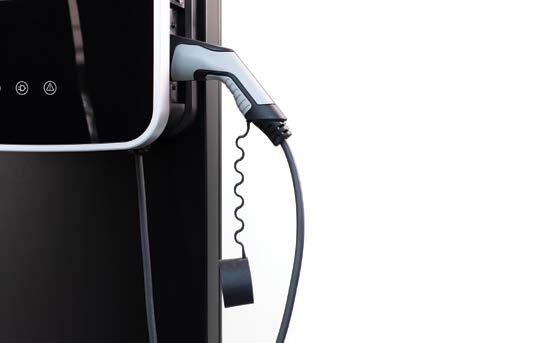
“We will see more lepidolite be brought online in China in 2023,” Cameron Perks, analyst at Benchmark Mineral Intelligence says. “But we won’t see as much as predicted by others. Give it five or 10 years, and it will increasingly become an important part of the market.”
All of this means the path to supply and cost relief for carmakers is fraught, even before considering the demand side of the ledger.
NO COLLAPSE
For now, China’s withdrawal of EV credits, as well as uncertainties over the pandemic and global economy, are weighing on the outlook. But a faster-than-expected reopening of China’s economy, and the rest of the world escaping a deep slump, could yet deliver an upside surprise.
Petalite or castorite is an important mineral for obtaining lithium.
“The market consensus and the consensus that I would agree with is that in 2023 pricing is likely to plateau, with perhaps some potential for downside but by no means do I see any sort of a pricing collapse,” says Berry of House Mountain Partners.
37 MINING
At stake is the pace at which the world’s vehicle fleet adopts battery power.
Article courtesy Daily Maverick
ELECTRIC CARS on the

2023 HIGHWAY
It has been another momentous year for electric vehicle markets and technologies, with major policy developments, sales growth, and landmark models set to enter the sector.

 BY IDTechEx
BY IDTechEx
China has thrown down the gauntlet once again in the automotive sector, with record electric vehicle (EV) sales approaching five-million a year. The dual-credit system – two types of credit that must be accumulated to avoid penalties – is a primary driver. Although impressive, the results are not perfect. Much of this has been achieved with sales of small and micro cars, an artificial result that reduces pressure for supply chains but is ultimately not the consumer preference. A shift towards affordable versions of larger vehicles will soon be needed as policy drivers fully phase out in the coming years – a more difficult task.
China’s success is leading to cross-pollination with other parts of the world, which could be key for mainstream EV adoption. Indeed, BYD and NIO (Chinese EV makers) have announced plans to sell EV models in Europe soon. The biggest hurdle to this may be political. The EU has a history of banning low-cost (or undercutting) EV imports from China, for example, a tariff of up to 83% was applied to e-bikes at the start of the craze a few years ago.
Within Europe, in June 2022, the EU confirmed a landmark internal combustion engine (ICE) ban for 2035, later saying that e-fuels will be banned for cars and light commercial vehicles (vans). The ruling

38 MOBILITY
IDTechEx
Market share of battery, hybrid and fuel cell cars against overall e-transport sectors (based on revenues).
further cements battery-EVs as the lynchpin of future road transport markets. The ban represents approximately nine-million to 10-million electric car sales annually by 2035 using current vehicle sales data. Given EU countries sold around 1.8-million electric cars in 2021, the targets, which are over a decade away, look achievable.
On the other side of the pond, the US market gained momentum with the modernisation of its federal tax credit for EVs, which is part of the broader Inflation Reduction Act. The incentive is designed to build a more localised supply chain. This is good for the long term, but it may mean it will be several years before the policy has an impact on market growth.
The emerging passenger truck market is the key US trend to watch for in 2023. Ford’s electric F150 was launched with overwhelming success, GM’s similarly priced Silverado is poised to enter the market in 2023, and GM’s luxury Hummer EV is sold out for two years. While Tesla currently has around 50% of the US EV car market, its share has declined slightly in recent years. As Tesla prioritises battery supply for the Model 3 and Model Y, IDTechEx expects incumbents’ passenger truck models to become significant drivers for US sales.
Taking a step back, it is easy to dismiss the hurdles the supply chain faces when looking at exponential sales data. While IDTechEx’s report expects that the capacity of current and future giga factories will be enough to support 36-million battery-electric cars per year by 2030, looking further upstream, particularly at lithium, there is uncertainty. What is becoming clear is the downsizing of battery capacities per vehicle while maintaining vehicle ranges will be key.
THE NEW EV BATTERY

Improving drive cycle efficiency means less of the precious energy stored in the battery is wasted when accelerating the vehicle, leading
to improved range from the same battery capacity (or the same range with reduced battery capacity). Upcoming electric motors and power electronics technologies are key avenues for this.
The emerging trend for 800V platforms and above is in full swing, with GM, Hyundai and VW undergoing a transition alongside start-ups such as Lucid Motors. 800V platforms improve efficiency by reducing joule losses and allowing high-voltage cabling to be downsized, saving weight. New technologies and materials are enabling the transition, namely silicon carbide MOSFETs using silver-sintered, die-attach materials and new cooling methods.
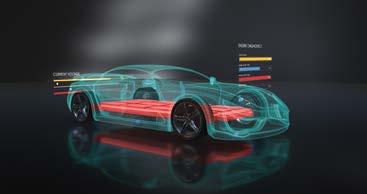


There are several key performance metrics for electric motors, but again, a critical area is efficiency. Due to the many different considerations in motor design, the EV market has adopted several different solutions, including permanent magnets, induction and wound-rotor motors. Key emerging motor technologies are axial flux and in-wheel motors.
Axial flux motors use more magnetic material, making them efficient and more power-dense, improving drive-cycle efficiencies via weight reduction. Similarly, while in-wheel motors require more motors per vehicle (one for each wheel), this can allow for greater optimisation. This again leads to improved drive cycle efficiency. Markets today are small, but IDTechEx expects increases in demand over the next 10 years, with first applications in high-performance vehicles, shuttle buses and certain hybrid applications.
39 MOBILITY
As the largest EV sector, China leads the race with over 1.5-million public charging points.
MOBILITY INNOVATIVE INFRASTRUCTURE
Like EV markets, EV-charging infrastructure has seen tremendous development in 2022. Public AC and DC fast-charging installations are the lifeblood of EV markets and installations increased in 2022 to support the growing popularity of EVs. As the largest EV sector, China leads the race with over 1.5-million public charging points. However, perhaps the most significant charging news of 2022 is the EU considering a landmark proposal to set new mandatory installation targets – for cars, there must be at least one electric charging pool every 60km along main EU roads by 2026. The move will help support the nine-million EVs IDTechEx expects to be sold annually in Europe by 2030.
Pioneering alternatives are also gaining momentum in certain subsectors. Battery swapping is an emerging alternative to public fast charging, wherein depleted batteries are replaced entirely in under five minutes. The quickest charge is the one you never have to do –this is the premise behind the technology that is seeing significant uptake in China and wider APAC nations. However, the capital costs associated with setting up a battery-swapping station are still higher than DC fast chargers. Whether this technology will be adopted elsewhere remains to be seen as market leaders such as NIO expands its footprint across Europe and the US.
While battery swapping is the answer to quick charge times, wireless charging is the answer to the most seamless charging experience. Buses will charge at bus stops, taxis in taxi ranks and autonomous cars in public garages, all without ever having to be plugged in. By eliminating the use of cables and connectors, the whole charging infrastructure is simplified. A transmitting coil creates a fluctuating magnetic field that generates a current as it is intercepted by a receiving coil placed underneath a vehicle. This year will be a major year for developments within the wireless charging market as pilot projects end, and commercial rollout begins.

It is not only the on-road transport sector that is looking for solutions to reduce greenhouse gas emissions. Indeed, operators of nonroad mobile machinery in the construction, mining and agricultural sectors must also decarbonise if companies and countries are to meet their net-zero emissions goals.
Key to the deployment of electric construction machines is understanding the daily duty-cycle energy demand requirement. To see widespread uptake, battery electric machines must be able to demonstrate to operators that they can deliver a full day of work. Short operational runtime and excessive downtime needed for battery recharging can greatly hinder the usefulness of electric
machines versus existing diesel models. Manufacturers must deliver the performance their customers expect while ensuring that the total cost of ownership (TCO) makes the adoption of these cleaner machines viable.
Early development work has been focused on compact construction machines. This is because their small size and relatively light-duty cycle requirements mean a typical eight-hour workday can be delivered with a practical size of Li-ion battery.
Fuel cells
Fuel cell (FCEV) vehicle deployments face considerable challenges, including decreasing the cost of fuel cell system components and rolling out sufficient hydrogen refuelling infrastructure. Also essential will be the availability of cheap “green” hydrogen, produced by the electrolysis of water using renewable electricity, which will be vital to FCEVs delivering the environmental credentials on which they are being sold.
Advanced Li-ion battery cells
Lithium-ion (Li-ion) batteries based on graphite anodes and layered oxide cathodes (NMC, NCA) have come to dominate large parts of EV markets. However, as they start to reach their performance limits and as environmental and supply risks are highlighted, improvements and alternatives to Li-ion batteries become increasingly important.
Advanced Li-ion refers to silicon and Li-metal anodes, solidelectrolytes, high-nickel (high-Ni) cathodes as well as various cell design factors. Given the importance of the EV market, specifically battery electric cars, on determining battery demand, Li-ion is forecast to maintain its dominant position.

Heavy-duty electrification: constructive developments.
This article is based on IDTechEx’s broad research portfolio into electric vehicles and energy storage. The adoption of electric vehicles, battery trends and demand across land, sea and air are tracked – helping navigate whatever may be ahead. Find out more.

40
IDTechEx
* By Luke Gear, principal technology analyst at IDTechEx. Other contributors are Dr James Edmondson, Dr James Jeffs, Shazan Siddiqi and Dr Alex Holland.
China’s success is leading to cross-pollination with other parts of the world, which could be key for mainstream EV adoption.








Long-duration
ENERGY STORAGE
As we endeavour to reach a carbon-neutral economy, electricity will become the core of the energy system. To ensure security of electricity supply, the resilience of networks needs to be strengthened with the implementation of long-duration, utility-scale storage technologies for discharge durations of four hours and beyond.
 BY LUX RESEARCH*
BY LUX RESEARCH*
According to the International Energy Agency, China and the US had the largest utility-scale storage capacity in 2020, with 1.9GW and 2.7GW, respectively; of this capacity, Li-ion technology accounts for almost 90% but does not offer long-duration energy storage capabilities. In this technology landscape insight, we will categorise the options for long-duration energy storage (LDES), excluding pumped hydro and hydrogen.
By region
Flow batteries are getting more attention among the different technologies; emerging interest is concentrated in the development of nonvanadium batteries, due to the high cost of vanadium and incentives to develop this technology using more sustainable materials, particularly in EMEA. In contrast to SMEs, for large and midsized corporations, chemical energy storage shows higher activity than mechanical energy storage.
Organisation count by technology and entity type

42 ENERGY
Research
Long-duration energy storage players.
Lux
Historically, there has been more demand and R&D opportunities in electrochemical forms of energy storage. None of the large corporations active in this space have energy storage as their core business; therefore, most of the developments in this business tier come from legacy electrochemical research. Across all organisation types, the technology development landscape is fragmented, indicating that there is no one-size-fits-all solution for LDES.
Chemical energy storage, primarily flow batteries, is the most active technology in terms of number of developers. A vast majority of the active SMEs are concentrating on flow batteries, although the market already has big, mature players like Sumitomo Electric Industries, Honeywell and Lockheed Martin. Nevertheless, there also is significant activity from research institutes, which are currently working on new materials, components and stacks to reduce the cost.
On the other end of the LDES technology spectrum, gravitational energy storage shows the lowest activity. Higher capital costs involved with the development of this technology and vast spatial requirements make it less attractive for SMEs and ultimately corporates.
There is no one-size-fits-all
CHEMICAL ENERGY STORAGE
Flow batteries. Flow batteries have efficiencies ranging from 60% to 75% and an expected cycle life of 20 000 to 30 000 cycles. The technology is preferred for applications where it’s beneficial to decouple energy and power and is particularly well-suited for microgrid support.

Vanadium redox flow batteries (VRFB) are the most mature technology, but the high cost of vanadium pentoxide and security of supply have driven development in other electrolyte chemistries.
Organic electrolytes are the least mature flow battery chemistry, but companies like JenaBatteries are pursuing the technology due to its low cost and use of sustainable materials.
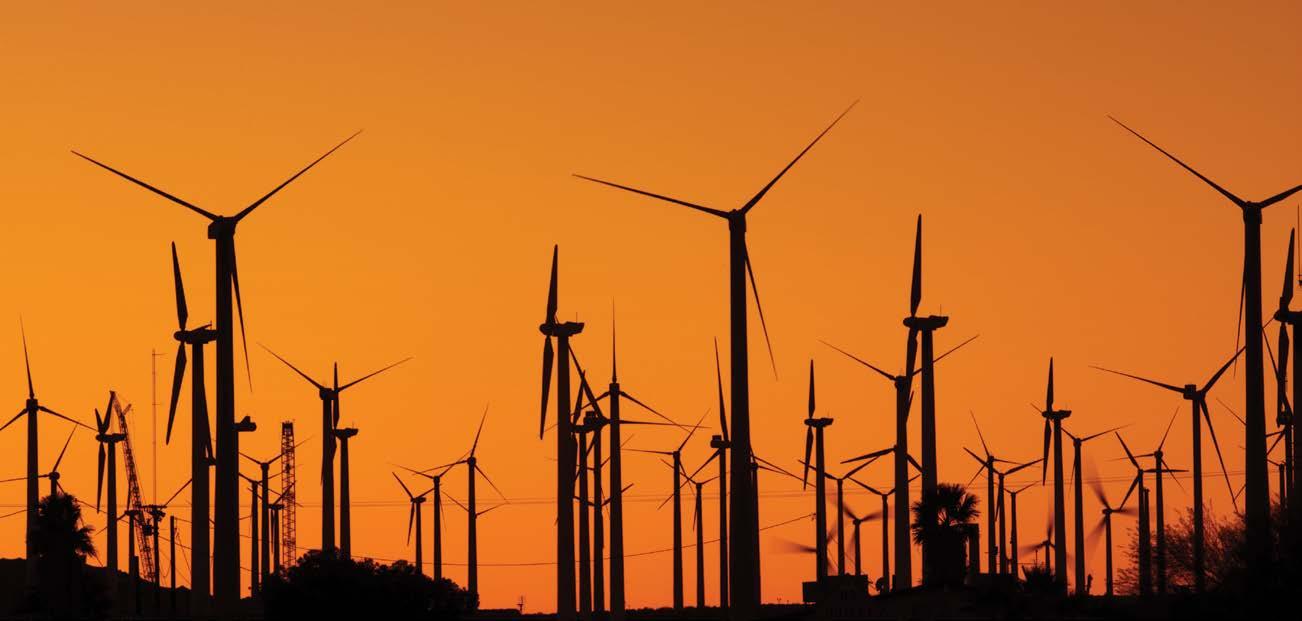
Metal-air batteries. These batteries (MABs) have efficiencies between 50% and 75% and – depending on the chemistry – have an expected cycle life of 100 to 1 000 cycles, but they can discharge for more than 100 hours. The technology is preferred for applications when renewables need a backup for long periods (16 hours or more) and is particularly well-suited for microgrid support to replace diesel generators.
Low efficiencies due to slow reactions at the cathode and to anode
degradation because of dendrite formation are two major issues currently bedevilling MABs. The development of low-cost air cathodes is a major challenge for MABs, mainly thanks to the high cost of the catalyst material (made from precious metals like platinum and gold).
In the midterm, MABs will find the best market fit in applications that require a low-cost battery that can discharge for long durations, as in commercial backup.
MECHANICAL ENERGY STORAGE
Gravitational energy storage. These technologies offer a round-trip efficiency of almost 90%, with cyclability limited mainly by wear-andtear on the machinery, which has an expected lifetime of between 30 and 50 years. Developers of this technology claim continuous power discharge for eight to 16 hours. The energy output of the system depends on the lifting height and mass of the blocks used. High capital costs and vast space requirements that translate into extremely low power density hinder the deployment of this technology.
43 ENERGY
NGK INSULATORS
The NAS battery is a megawatt-level energy storage system that uses sodium and sulphur.
solution for long-duration energy storage.
Of late, interest has revived in rail-based gravity energy storage systems, which could find a fit in applications with fewer restrictions on energy density.
Compressed and liquid air energy storage. Compressed air energy storage (CAES) and liquid air energy storage (LAES) technologies offer round-trip efficiencies between 50% and 90%, with cyclability limited mainly by machinery wear and tear. Such systems have an expected lifetime between 20 and 60 years and provide continuous power discharge for one to 24 hours. Over the past five years, approximately $500-million has been invested in CAES/LAES technologies; 63% of the investment has been raised by Hydrostor in 2022, which plans to develop a 500MW/4 000MW power plant in California, expected to be in service by 2026.
LUX TAKE
The future power grid will require a combination of these LDES technologies, depending on regional energy mixes. There will be no dominant long-duration technology, but within each application fit there will be clear winners.
Mechanical energy storage technologies use mature physical concepts and integrate system components from other industries. However, the implementation of these technologies is targeted at large-scale projects that require hefty capital investment in a market that isn’t yet equipped to optimise those assets.
Chemical energy storage technologies have a wide range of technology readiness, but among them, flow batteries are an active area of development with the most mature chemistry of VRFB. The development of chemical energy storage will be driven by the implementation of low-cost and sustainable materials.
Clients interested in LDES integration should consider engaging with companies that have a mostly developed technology but struggle to find deployment opportunities, like zinc-air developers or CAES companies. Clients interested in early-stage innovation should first evaluate what strengths they can offer to immature technologies; chemical energy storage companies would benefit from materials development, while mechanical energy storage companies would benefit from engineering optimisation.
THOUGHT [ECO]NOMY greeneconomy/report recycle
BATTERIES FOR STATIONARY ENERGY STORAGE 2023-2033 | IDTechEx | [November 2022]


Global Cumulative Stationary BESS Capacity to Exceed 2TWh by 2033
Battery demand for stationary energy storage is set to grow in line with an increasing number of renewable energy resources being added to electricity grids globally, alongside pressure from governments and states to reach targets pertaining to renewable energy generation and energy storage.


Various factors are driving the Battery Energy Storage System (BESS) market. Firstly, the necessity for higher levels of renewable energy integration into electricity grids will require higher volumes of BESS to help stabilise electricity grids while providing energy security and supply. As well as this, energy and battery storage targets and clear policy frameworks are helping to expedite BESS deployments in the regions where these drivers have been announced. This is apparent in countries such as the US, China and Australia.
The US and China will be responsible for most of the global cumulative BESS capacity in 2033 while rivalling each other for total deployments. Without question, these countries’ storage targets, clear market regulations, and profitable business models play a key role in the volume of successful project installations, especially on the front-of-the-meter (FTM) side.
Annual FTM installations will take a larger share of global annual BESS installations, by GWh, than behind-the-meter (BTM) installations in the next decade. Moreover, the means for these large battery systems to produce revenues for their owners are becoming more apparent through mechanisms such as revenue stacking. As business models continue to mature, investor confidence in large BESS profitability will grow, thus facilitating reduced future project costs and increased installation volumes. Order a copy of the report here
44
ENERGY
REPORT
BASF
JenaBatteries and BASF are producing an electrolyte for a battery technology that is suitable for stationary storage of electricity from renewable energy sources and for stabilising conventional transmission grids.
* Article written by Juan Cortes and Chloe Herrera.
Li-ion batteries have become an increasingly important stationary energy storage technology. They now account for >90% of global installations of electrochemical energy storage.
IDTechEx
Lithium iron phosphate batteries are THE SOLUTION TO securing connectivity during LOADSHEDDING


As the two founders of REVOV, we spent more than a decade in the telecoms industry where a lot of work went into designing, planning, implementing and testing various ways to keep telecom towers running in various regions of Africa. The challenges were many, but the premise was simple: how do we keep towers running when generators aren’t an option and there’s no electricity?
BY LANCE DICKERSON*
This is where our foundational understanding of the power of batteries and their application in telecoms specifically, and power backup generally, was developed. At this point, it is vital to introduce the topic of chemistry. Batteries work through chemistry and many of the painful lessons we learnt prior to launching REVOV in 2015 were down to the limitations of lead acid technology, a lesson no doubt still being learnt by many a telecom company on this continent.
Lithium batteries are without any shadow of a doubt the superior batteries. Many reading this will have used a volatile type of lithium battery called nickel manganese cobalt (NMC) more than they realise in their smartphones or laptops. These batteries are known to ignite at higher temperatures.

A newer, superior chemistry called lithium iron phosphate has emerged as the safest, most stable and longest-lasting of storage battery chemistries. Beyond this, lithium iron phosphate 2nd LiFe batteries, which are built from the repurposed but fully functional cells of EV batteries, come with the added benefit of engineering built for harsh operating conditions – think of the heat and charge-discharge ratio in the usage of an EV. LiFe, in the name 2nd LiFe, is a word constructed from the periodic table symbols of lithium (Li) and iron (Fe).

So, as a base understanding, we land on 2nd LiFe batteries as prime candidates for backup storage, either for renewable energy installations or uninterrupted power supply systems. In this case, 2nd LiFe is primed for telecom tower battery backup, and this is why:
In a properly set up and configured 2nd LiFe lithium iron phosphate battery backup system, the time to recharge is identical to the time of discharge. The 1:1 ratio means that if the battery has been used for four hours, it needs four hours to recharge until its full. If it has been used for six hours, it requires six hours to be recharged until full. Beyond this, the discharge curve is stable, and unlike lead acid
doesn’t plummet after a critical point in time, which makes them fundamentally different to lead acid batteries, not just in performance, but reliability and lifespan.
This provides a compelling answer to batteries being rapidly recharged in the gaps between bouts of loadshedding in the higher stages. However, the transmission infrastructure of some areas leaves a lot to be desired, and in some instances there quite literally is not enough current. Beyond this, some areas do not return after loadshedding because of various technical faults meaning areas are in the dark for far longer than anticipated. Another factor is the breaker size used at each site, which will determine the performance of the system during recharge periods.
While these are technical discussions, an analogy for a layman’s understanding is: presuming the sites already have remote generators that are 10KVA, for example, the following could easily be done. We must understand that a generator cannot be run under capacity for extended periods of time, as much as it cannot be overworked for extended periods, lest the life of the machine is severely compromised. And so, running a 10KVA generator could split 7KVA to charge batteries while 3KVA powers the tower. As a stop-gap measure this prepares the site for the next power outage, remembering that the superior lithium iron phosphate performance enables a 1:1 discharge to charge ratio.
The point is that we are all in the throes of a devastating crisis that threatens our very economy. Working together, bringing expertise from various sectors, South Africans really can come up with compelling solutions to the crisis. In the absence of this, and certainly in the absence of any largescale understanding of battery chemistry, the status quo will no doubt continue as we wait for Eskom’s crisis to finally be addressed, and this won’t be tomorrow, next month or next year.
45 ENERGY
*Lance Dickerson is the founder and CEO of REVOV.
Sodium-sulphur batteries (NAS® Batteries), produced by NGK Insulators Ltd., and distributed by BASF, with almost 5 GWh of installed capacity worldwide, is the perfect choice for large-capacity stationary energy storage.






A key characteristic of NAS® Batteries is the long discharge duration (+6 hours), which makes the technology ideal for daily cycling to convert intermittent power from renewable energy into stable on-demand electricity.
NAS® Battery is a containerised solution, with a design life of 7.300 equivalent cycles or 20 years, backed with an operations and maintenance contract, factory warranties, and performance guarantees.
Superior safety, function and performance are made possible by decades of data monitoring from multiple operational installations across the world. NAS® Battery track record is unmatched by any other manufacturer.
Provide for your energy needs from renewable energy coupled with a NAS® Battery.
Contact us right away for a complimentary pre-feasibility modelling exercise to find out how a NAS® Battery solution can address your energy challenges!
Battery energy storage powered by renewable energy is the future, and it is feasible in South Africa right now!
Altum Energy: BASF NAS Battery Storage Business Development Partner – Southern Africa
info@altum.energy www.altum.energy
SUPERIOR TECHNOLOGY Stationary energy storage
Sodium-sulphur (NaS) batteries are used for many large-capacity grid applications as the NaS battery system boasts unrivaled function and performance, which has been made possible from decades of research, design, testing, demonstration, advanced manufacturing and over 20 years of proven commercial operation. Energy storages for stationary applications provide additional power for spinning reserve and energy for peak-shaving. Sophisticated technologies are needed to stabilise grids and to elude congestion as well as transmission deferral.
THE BETTER OPTION
Offering significant advantages over competitive technologies, NaS batteries have a high energy density and charge/discharge efficiency, as well as a long cycle and service life. These batteries can be used as peakers, in place of diesel or gas-fired generators, because they supply reliable power for six hours at a time. This application saves money and offers the utility carbon tax savings due to the elimination of gas or diesel exhaust. The batteries are built from environmentally benign materials and are easily and safely disposed of.
HOW DO THEY WORK?
NaS batteries operate at high temperatures between 290°C and 340°C. They use a solid electrolyte, which is unique among the common secondary (ie rechargeable) cells. One electrode is molten sodium and the other molten sulphur. The chemical reaction between them produces an electric current.
SPECIFIC BENEFITS
Stationary NaS batteries meet specific requirements for reliability of power supply and voltage stabilisation on power grids. As such, they can provide power stored up from off-peak times to meet peak demand, effectively adding capacity on the grid (peak-shaving). They are useful for back-up in power outages as they offer a steady supply of current for an exceptionally long time. When used in a microgrid, NaS batteries offer both storage and smoothing of output from variable renewable energy sources.
Typical NaS battery units are housed in a 20ft standard sea freight container and are equipped with six large NaS modules, an airconditioned control cabinet with the Battery Management System (BMS) and are ready for easy installation and DC-voltage connection to the Power Conversion System (PCS). The total number of NaS containers depends on the power and capacity requirements, lifetime and load profile of the application. Typically, the charge/discharge efficiency in the 85% range provides efficient use of energy, with slow linear degradation over an extended lifespan.
NaS battery systems have been deployed for over 20 years, at more than 200 projects worldwide, with a total installed capacity of more than 580MW and 4 000MWh globally.

THE LONGEVITY AND BREVITY OF BATTERIES
A battery’s value is in its lifespan – the longer it lasts, the higher the return on investment will be (as replacement costs are not added over the total project period). The battery lifespan should match the optimal financial period of a project. Specifying a battery without an established lifecycle is a risk, which may have financial implications. Battery degradation affects the performance and lifespan of a battery and it may need to be replaced.
ENERGY VS POWER
Energy batteries are used in applications that require a reliable, longterm supply of power at the rated output (eg mobile phones laptops. Power batteries provide short bursts of high-power energy and are found in automotive, industrial, and rapid-charge applications.
HIGH-ENERGY OR HIGH-POWER DENSITY?
Energy storage systems that have a high-energy density store a lot of energy in a smaller amount of mass. High-energy density does not mean high-power density. A system with a high-energy and low-power density operates for a relatively long period (eg a mobile phone’s battery power will last for most of the day before it requires a recharge.)
High-power density systems provide large amounts of current based on their mass (eg a tiny supercapacitor may have the same power output as a large battery but due to its size, it will have a higher-power density. High-power density systems recharge faster as their energy release is faster (eg a camera flash needs to be small to fit inside a camera but requires a higher-power output for the flashtube.)
PERFORMANCE AND RELIABILITY
Storage technologies vary, they are not commodities, so their application, lifespan, risk factors must be well understood before an investment is considered.
For more information on sodium-sulphur batteries in South Africa, contact
47 ENERGY
The need to store electrical energy from renewable sources for use when a fixed-power connection is unavailable has led to technological innovation in the design of batteries over the years.
Lloyd at Altum Energy (lloyd@altum.energy).
NGK
A sodium-sulphur battery.
Hydrogenation forms a mixture of lithium amide and hydride (light blue) as an outer shell around a lithium nitride particle (dark blue) nanoconfined in carbon. Nanoconfinement prevents interface formation, which dramatically improves the hydrogen storage performance.

GREEN HYDROGEN
How South Africa can capitalise on it, and why we need to do it now
A recent IEA report makes the call for a massive increase of concessional finance to mobilise largescale private investment in hydrogen projects in developing countries. But how can hydrogen (a gas) be green and why is it necessary in the energy system?
In what was dubbed a “landmark” report, the International Energy Agency (IEA), the International Renewable Energy Agency (Irena) and the UN Climate Change High-Level Champions released the Breakthrough Agenda Report 2022, which provides an independent assessment of the historic commitments made by governments at COP26 in 2021, and the recommendations in the run-up to COP27.
The report delivers a clear call to action for governments along with key recommendations that can help to rapidly reduce emissions, cut energy costs and boost food security for billions of people worldwide, in line with the goal of keeping global warming to a maximum of 1.5°C (the tipping point). A large focus of the report was ramping up development of low-carbon and renewable hydrogen – recommending an increase of less than one-million tons in 2020 to about 150-million tons by 2030, which requires doubling each year from today. The report looked at how international cooperation can increase the availability and affordability of renewable and low-carbon
hydrogen and makes a strong call to increase concessional finance by multilateral development banks to mobilise large-scale private investment in hydrogen projects in developing countries.
“What’s different about this report is its focus on international collaboration,” Simon Sharpe, director of economics for the UN Climate Change High-Level Champions said at the launch of the report. “There are many other reports out there saying what countries or businesses can do individually. This is about how they can work together to achieve more than the sum of their parts. It can do that with faster innovation, stronger incentives for investment, larger economies of scale and level playing fields where we need them. All those things can make transitions faster, less difficult and at a lower cost.”
Elizabeth Press, director of planning and programme support at Irena, says that “hydrogen is everybody’s darling at the moment, there is a lot of policy attention to this… on where international cooperation can really shift the needle on hydrogen.”
48 ENERGY
Sandia National Laboratories
Hydrogen research in South Africa was motivated in part by the potential impact that the transition away from the internal combustion engine (ICE) to battery EVs would have on the country’s platinum mining industry. Together, South Africa and Zimbabwe hold over 90% of the world’s known PGM reserves. Since 30% to 40% of the supply goes into the production of catalytic converters for ICE vehicles, the initial focus of research was on hydrogen-powered fuel cell EVs as an alternative market. It is estimated that South Africa has the potential to produce six-million to 13-million tons of green hydrogen and derivatives a year by 2050. To do so would require between 140 and 300GW of renewable energy. President Ramaphosa, November 2022
Doubling every year also requires an accelerated deployment of renewable power. To reach these targets, a sharp escalation in financing across the hydrogen value chain is required. Out of the hydrogen production that exists today, only 1% of it is “climate-proof”. But how is hydrogen used to create electricity and why is it necessary for us to include it in the energy mix?
HYDROGEN IN THE ENERGY SYSTEM
Will Swart, an energy engineer at Meadows Energy, explains that there are several ways to produce hydrogen, but the most common is through hydrolysis – using electricity to split water molecules into hydrogen gas and oxygen atoms – this process is very energy intensive, so it’s only “green” hydrogen if this process is fuelled by renewable energy (such as wind or solar), not from fossil fuel energy (such as coal) called “grey hydrogen”, which is what Sasol does.
“And then you can convert that hydrogen back into electricity through a process where hydrogen reacts with oxygen across an electrochemical cell producing electricity and water – so, it’s basically the reverse of when you produce it.”
Tobias Bischof-Niemz, energy expert and CEO of renewable energy company ENERTRAG South Africa, agrees and explains that hydrogen acts as an energy carrier – you can either store hydrogen or use it right away. “If you use the hydrogen in a direct reduction furnace, for example in a steel plant, then the hydrogen effectively burns and becomes water again.”
Unless there is a gas leak, there are no emissions that go into the atmosphere, just water vapour – making it “green”. While Bischof-Niemz acknowledges that we do have to monitor leaks, he said that even with an enormous leakage of 10% of hydrogen – which is “actually impossible, because a lot of the hydrogen will immediately be converted into something else, like ammonia” – the global warming potentials of the entire leak would only be less than 1% of today’s CO2 emissions.

IS HYDROGEN REALLY NECESSARY?
Well, hydrogen has three real benefits – long-term storage, economic opportunities from exporting it to other countries and decarbonising the environment. While long-term storage is not as relevant in a country like South Africa with less seasonal variability (we have more consistent solar, for example, unlike countries in Europe), hydrogen is a technical necessity to decarbonise our environment. Press from Irena say that a driving force behind green hydrogen development is that it is a “climate imperative”.
“There are absolutely areas where we know no other solution exists today, and that the hydrogen needs to be advanced for that purpose,” says Press. Bischof-Niemz explains that green hydrogen is a technical
necessity in a completely decarbonised, net-zero world because there is no other (known) way to decarbonise steel, shipping, aviation fuel, fertiliser or chemicals. For example, large container ships cannot run on batteries and need a fuel, and a green one at that. “So, naturally we need a fuel that is made out of the new primary energy which will be electricity from sun and wind,” says Bischof-Niemz.
The report highlights that there are limited alternative clean energy solutions in sectors such as heavy industry, shipping, aviation, seasonal electricity storage and potentially segments of heavy-duty trucking.
Considering that transport has the greatest reliance on fossil fuels internationally, the need for hydrogen becomes more obvious.
ALL-ELECTRIC NOT FEASIBLE





Ronny Kaufmann, CEO of Swisspower, a strategic alliance of the most important city utilities in Switzerland, speaks about the importance of leveraging a country’s natural resources when it comes to the energy mix and the importance of green hydrogen for storage. Kaufmann says he does not believe in an all-electric energy system because it “has its systemic failures and is a romantic view for some people”. Using other energy sources, such as hydrogen or biomethane, is better than just producing electricity in certain cases. “But a world where you substitute all energy resources into electricity will not work. It is better to use hydrogen than fossil gas – and an all-electric world is not feasible.”
Energy expert Clyde Mallinson says one criticism of hydrogen development is that South Africa doesn’t require long-term storage. “This is not currently the case in many higher latitude countries, who have massive inter-seasonal variances in solar in particular,” he says. Bischof-Niemz agrees that long-term storage is less relevant in a country like South Africa, but says it is still needed in sectors that cannot decarbonise otherwise. Additionally, hydrogen could become more relevant in South Africa as renewable generation increases and if we create surpluses. For example, Kaufmann explains that every country has its own energy technical environment, and for Switzerland it’s a hot summer and a very cold winter, which means in summer there is a surplus of electricity. Switzerland produces as much energy in summer as possible and uses the surplus (from renewables or nuclear sources) to pump water to the mountains where they have dams. Then in winter, when electricity demand is higher, they use this water to generate power.
49 ENERGY
Researchers have developed a sandwich-structured catalyst that can generate hydrogen energy by activating water electrolysis.
Pohang University of Science & Technology (POSTECH)
Kaufmann explains that like Japan (but unlike South Africa), Switzerland doesn’t have a lot of surface but it does have verticals in the landscape, which it uses to produce energy. Historically, it was much easier to produce water than solar energy, so most of Switzerland’s electricity comes from hydropower (pump storage from dams and runof-the-river hydroelectricity).
In South Africa, using our space and wind and solar potential and storing surplus energy through green hydrogen could be beneficial.

“A lot of people think it’s the answer to energy storage,” says Swart, referring to hydrogen. “Wind and solar only produce power when the sun is shining or the wind is blowing. But if you use that renewable energy to produce hydrogen, then you have a means to store that energy.”
Kaufmann adds: “There are a lot of production possibilities for gas, like using electricity surpluses you have from the summer that you can’t store with renewable sources.”
Bischof-Niemz explains that hydrogen is not an alternative storage to batteries but can be used in addition. Batteries are “perfectly suited to balance the day-to-night-time fluctuations, but hydrogen is better suited for the long term, because you can store it away inexpensively without losing anything.”
Swart adds that with its good wind and solar resources, South Africa could set up plants to produce green hydrogen, which it could export to “anyone across the world to use that to produce green electricity, which could be huge for South Africa”.
The country has abundant natural resources and available land for the process and is thus ideally positioned to produce enough green hydrogen to both decarbonise many of its own energy-intensive industries and tap into the rapidly building global demand for the
fuel, according to research commissioned by the EU Delegation to South Africa. For example, Switzerland, which doesn’t have naturally occurring fossil fuels such as gas or coal, doesn’t import coal but does import renewable gas. Kaufmann says the country has a target to make its gas consumption more renewable. And like many countries in Europe, it is highly dependent on Russian gas. “Societies are realising that we have to first diversify the origin of our gas suppliers and then make our gas consumption more renewable,” says Kaufmann.
SOUTH AFRICA’S PLANS FOR HYDROGEN
South Africa already produces hydrogen – but it is “grey” hydrogen from fossil fuels (coal), which results in massive carbon emissions.
Bischof-Niemz’s research found that Sasol’s Secunda site in Mpumalanga – which converts large quantities of coal into fuels, chemicals and CO 2 – is one of the world’s largest sources of CO2, emitting 57-million tons every year. Secunda has a Fischer-Tropsch reactor, into which hydrogen and carbon monoxide is placed to create liquid hydrocarbons, such as petrol and aviation fuel. While it produces dangerous emissions now, this technology could be used to create green hydrogen. “It’s a huge liability, but you can turn it into an opportunity as well, because the Fischer-Tropsch technology is needed in the long run in a decarbonised world to produce aviation fuel,” says Bischof-Niemz, explaining that in a completely decarbonised world we will need chemical facilities like the Fischer-Tropsch reactor to produce synthetic aviation fuel.
And South Africa does have plans to make hydrogen production green – President Cyril Ramaphosa, in his 2022 State of the Nation address, announced R270-billion for the development of a hydrogen pipeline. And Minister of Higher Education, Science and Innovation

Blade Nzimande has launched South Africa’s Hydrogen Society Roadmap, which proposes that hydrogen be used throughout the economy. There seem to be plans in place, but what the breakthrough report indicates is that this needs to happen now.
“This report is totally right. We need more engagement, more money in the system, more courage, more economies of scale,” says Kaufmann, adding that the second thing that stood out in the report was that “we’ve got to be faster”.
THOUGHT [ECO]NOMY


greeneconomy/report recycle
THE BREAKTHROUGH
AGENDA REPORT
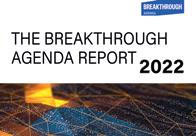
2022 | International Energy Association | International Renewable Energy Agency | UN Climate Change High-Level Champions | [2022]
The world is facing multiple and compounding crises. The effects of climate change are intensifying. The availability and affordability of both energy and food are at risk in many countries, contributing to a broader cost-of-living crisis. The response must not be to slow down the transition to sustainability but to move even faster.
A massive scaling up of clean energy investment and deployment worldwide is needed to enhance energy security, affordability and access, and the transition to sustainable land use is essential to protect our food systems against future shocks. This report is a joint product of the IEA, IRENA and the UN Climate Change HighLevel Champions. Each organisation has brought its own expertise to deliver clear recommendations for the actions that governments and companies need to take. Many now see the opportunities of the low-carbon transition and are competing to lead the development of new technologies. This is to be welcomed.
The opportunity is for countries, businesses, communities and citizens to work together to accelerate the growth of global markets for clean technologies and sustainable solutions while continuing to compete to supply them.
50 ENERGY
Hydrogen is everybody’s darling, at the moment.
READ REPORT
Hydrogen Power Agriculture Agriculture The Paris goals 54 29 82 140 172
Article courtesy Daily Maverick
Connecting Strength
Brand new MultiRail CSM
• Roof connection and mounting rail in one











• Quick planning with little material input and no predrilling or complex fixing in the roof substructure
• Better rear ventilation can be achieved through the elevation with RailUp

k2-systems.com
POWER to the PEOPLE
Distributed solar has for a long time been perceived as secondary to the large, utility-scale photovoltaic plants. However, in recent years it has grown in importance and now takes the front seat in energy transition plans in many countries. How can South Africa benefit from this emerging trend?
Now a far cry from a once-niche solution targeted at industry aficionados – commercial and industrial and residential PV installations account for 50GW of solar power deployed globally in 2022. That means about one third of the whole solar capacity installed around the world came in the form of distributed solar.

While residential and C&I installations can be ground-mounted, they are most frequently placed on rooftops. In leading solar markets, residential solar installations are becoming a rule rather an exception. Nowhere is this more apparent than in Australia. According to the National Survey of PV Power Applications in Australia, more than 30% of free-standing households across the nation are fitted with PV systems. In Queensland and South Australia, the average is closer to 40%, and more and more communities record penetration of rooftop solar at over 50%.
The burgeoning importance of residential solar is confirmed by Norwegian research company Rystad Energy. As per the company’s data, in 2021, for the first time in history, the world installed more PV capacity in residential than in C&I systems.
UNTAPPED POTENTIAL
Compared to other markets, the fundamentals of distributed solar in South Africa are as strong as it gets.
The technical potential is exceptional, with PV plants in South Africa producing 2 500kWh of electricity per year from 1kWp of solar power installed, twice as much as in the European Union.
“The motivation to go solar by businesses and homeowners is already very strong, even without additional incentives from the government. Daily loadshedding resulting in blackouts for six, eight or more hours makes an investment in solar systems less about savings and more about securing business continuity,” comments Heino Louw from solar equipment distributor Menlo Electric. “That is not to say that savings


52 ENERGY
Bartosz Majewski, CEO, and Heino Louw, general manager of Menlo Electric, the fastest-growing distributor of PV modules and inverters in EMEA.
Distributed solar could make for a significant portion of the whole power mix for South Africa.
potential is not a strong motivation – and with electricity prices at a level seven times higher than in 2007 and still growing, that motivation is getting stronger every year,” he adds.
Based on benchmarks, distributed solar could make for a significant portion of the whole power mix for South Africa, both rooftop and ground mounted. Presently, Australia has the highest power of per-capita rooftop PV installations with about 750 watt-direct current (WDC), then Germany at a close to 700WDC per person, and Japan at approx. 350WDC per person. If South Africa reached only 100WDC per person, rooftop installations would add 6GW of PV capacity, producing 15TWh of electricity each year. Adding ground-mounted distributed solar systems to the calculation could double these numbers. In total, the electricity generated this way would equal the expected output of Kusile Power Station.
DISTRIBUTED POWER AND FUNDING – AND RISKS
The comparison to the troubled development of Kusile station highlights other advantages of distributed solar. First off, the funding does not have to burden the State budget or that of Eskom. The costs are borne by thousands of individual and corporate clients, who are commissioning the plants from their local engineering, procurement and construction (EPC) contractors. And these are no small sums –development of 1GW of distributed solar costs almost $1-billion. Additional savings are derived from the fact that the installations are located close to sources of demand. This translates into a lower strain on electricity distribution networks and reduced capital expenditures for the development of the grid. Obviously, at some saturation level new investments in the transmission network would still be required.
On the risk side – since the installations are dispersed among many locations, EPCs and clients; delays in an individual project do not spill over to other projects. That means that new capacity comes online daily, in a gradual, but uninterrupted way.
HELP ME HELP YOU
The main challenge with owning a solar system is that it produces most of electricity in the middle of the day – when residents are typically at work. In contrast, electricity is mostly consumed by households in the mornings and evenings, when the installation does not produce as much energy.



One way to work around this mismatch is to add a battery set to the system. This, however, can easily double the value of the investment, inflating it to a prohibitive level for most homeowners and companies. That is why distributed solar is most successful in countries where a dedicated incentive scheme is implemented.
One popular measure is “net metering”, which has been adapted in various forms by many countries in Europe and almost 40 states


in the USA. Under this scheme, surplus electricity generated by the solar system is fed into the grid for other users. The electricity meter “runs backwards” to record this energy, so that the homeowner only ends up paying for the net electricity consumed – hence the name of the scheme.
Other support schemes may involve sales of electricity to the grid at pre-agreed price under the Feed-in-Tariff regime, direct subsidies for systems or guarantees for bank loans.
IT’S BEEN DONE BEFORE: IT CAN BE DONE AGAIN
“Among other countries that have swiftly ramped up capacity through distributed solar, Poland is perhaps the most akin to South Africa,” comments Bartosz Majewski, CEO of Menlo Electric. “Poland’s power generation system has faced many of the same challenges that South Africa is experiencing, including a large and aging fleet of coal-fired power plants built in the 1960s and 1970s as well as a slow pace of utilityscale renewables developments.”
The introduction of net metering allowed for owners of PV microinstallations up to 50kW to feed surplus energy into the grid and then receive 70% to 80% of it back at no cost. This spurred a wave of deployment of such systems across the country. In the four years between 2019 and 2022 more than one-million people and businesses installed solar systems on their rooftops and in their backyards. This translated into almost 10GW of additional PV solar power connected to the grid. From being perceived as one of European Union’s laggards, Poland surged ahead to become one of the top three solar markets on the continent both in 2021 and 2022.
More than $8-billion of private investments from home and business owners were mobilised through this scheme. Of it, Poland’s state and municipal administration collected at least USD1-billion in VAT and income taxes. Moreover, the industry created an estimated 120 000 jobs in installations, servicing and sales – of which more than 50% were located in Poland’s underdeveloped regions.
“Entrepreneurs and technical specialists that entered the solar industry during this photovoltaic boom often branched out to other segments or renewable energy, animating the ecosystem and contributing, for example, to a recent growth in sales of heat pump installations. So apart from the immediate, quantifiable benefits developing distributed solar will have a positive impact on the energy industry as a whole,” concludes Majewski.
53 ENERGY
The fundamentals of distributed solar in South Africa are as strong as it gets.
Waste management is key to a HEALTHY ENVIRONMENT
BY THE DEPARTMENT OF FORESTRY, FISHERIES AND THE ENVIRONMENT
Marine plastic waste is a global problem that threatens biodiversity and wildlife, and originates mostly on land from single-use plastics. When these products and packaging are not properly disposed of, they leak into the environment.

The 2018 State of Waste report estimates that of the 55.6-million tons of general waste that was generated in South Africa, 19 247 851 tons was organic waste and 65.2% was landfilled. To improve waste management in South Africa, government is working to progressively increase the number of households with access to weekly waste collection; improve landfill compliance and is looking to the future of waste disposal beyond landfilling. In this regard the reduction and recycling of waste plays an important role.
Government aims to have 40% of waste diverted from landfill within five years through reuse, recycling, recovery and alternative waste treatment. The aim is to reduce the current amount of waste by about 25% over the same period and ensure a further 20% of waste is reused in the economic value chain.
The year 2022 was a vital year in the implementation of the Extended Producer Responsibility schemes for packaging products, eWaste and the lighting sectors, and the Department hopes to extend these schemes for batteries, pesticides and lubricant oils in the near future.
Regulations for organic waste treatment, as well as the composting of organic waste, were published in 2022 for implementation. This will help ensure that organic waste, including food waste, is diverted from landfills and used in composting and other sustainable technologies
South Africa joined member states of the United Nations Environment Assembly in affirming its commitment to curb plastic pollution. But this means that the Department needs to ensure that the transition for plastic packaging is phased, and that the circumstances of the domestic plastic industry are addressed. This includes the close linkages with the food industry.
The 2020 National Waste Management Strategy identified food waste and loss as a critical area that requires intervention. Thus, the development of a Draft Food Loss and Waste Strategy which, amongst others, aims to increase awareness on the impact of food waste, align with chemicals and waste economy initiatives, strongly integrate different disciplinary perspectives and best practices and map out the determinants of food waste generation to deepen the understanding of household practices and help design food waste prevention strategies.
Food and beverage waste also has a significant impact on the environment due to methane gas which contributes to greenhouse gas (GHG) emissions produced when food spoils. Food production is
54
Inadequate waste management poses a significant threat to the environment, polluting the soil and ground water and undermining ecosystem functions and services.
WASTE
resource intensive, while resources such as water, labour and energy are wasted, and biodiversity is impacted upon negatively.


Waste management extends beyond industry and civil society. It is about individuals, households and those who earn a living through waste collection and recycling. There are between 60 000 and 90 000 informal waste reclaimers working at the heart of South Africa’s recycling economy, recovering mostly paper and packaging waste from households and businesses.
Data published by the packaging sector prior to the Extended Producer Responsibility regulations came into effect, estimates that waste reclaimers collect 80% to 90% of post-consumer paper and packaging for recycling. Government, industry and civil society recognise the important role waste reclaimers play in the diversion of valuable resources away from landfill and they promote the need to formalise and protect these livelihoods and the circular economy. Waste reclaimers are also a critical link between households and recycling enterprises.
Although South Africa has made significant strides in improving waste management since 1994, almost a third of households still do not have regular weekly household waste removal services.
To achieve the goals of the National Waste Management Strategy, national and provincial government must support municipalities to develop local integrated waste management strategies.
The investment in yellow fleet (landfill management vehicles) to municipalities is an important part of the effort. The Department has, therefore, co-operated with National Treasury and the Department of Cooperative Governance and Traditional Affairs (CoGTA) to change the Municipal Infrastructure Grant Policy so that municipalities can access this grant to fund their yellow fleet. In addition, the Department spent R42.4-million in the past financial year to provide 22 vehicles to 19 municipalities across the country. The vehicles include skip loader trucks, front-end loaders, compactor trucks and other trucks required to transport waste within these areas. Communities must begin to separate their waste at home so that waste reclaimers can undertake their work in a dignified manner. Households must teach family members not to litter and must work with their neighbours to prevent illegal dumpsites. All of us must participate in regular clean-up campaigns to beautify our communities and protect our environment.
Government aims to have 40% of waste diverted from landfill within five years through reuse, recycling, recovery and alternative waste treatment.


55 WASTE
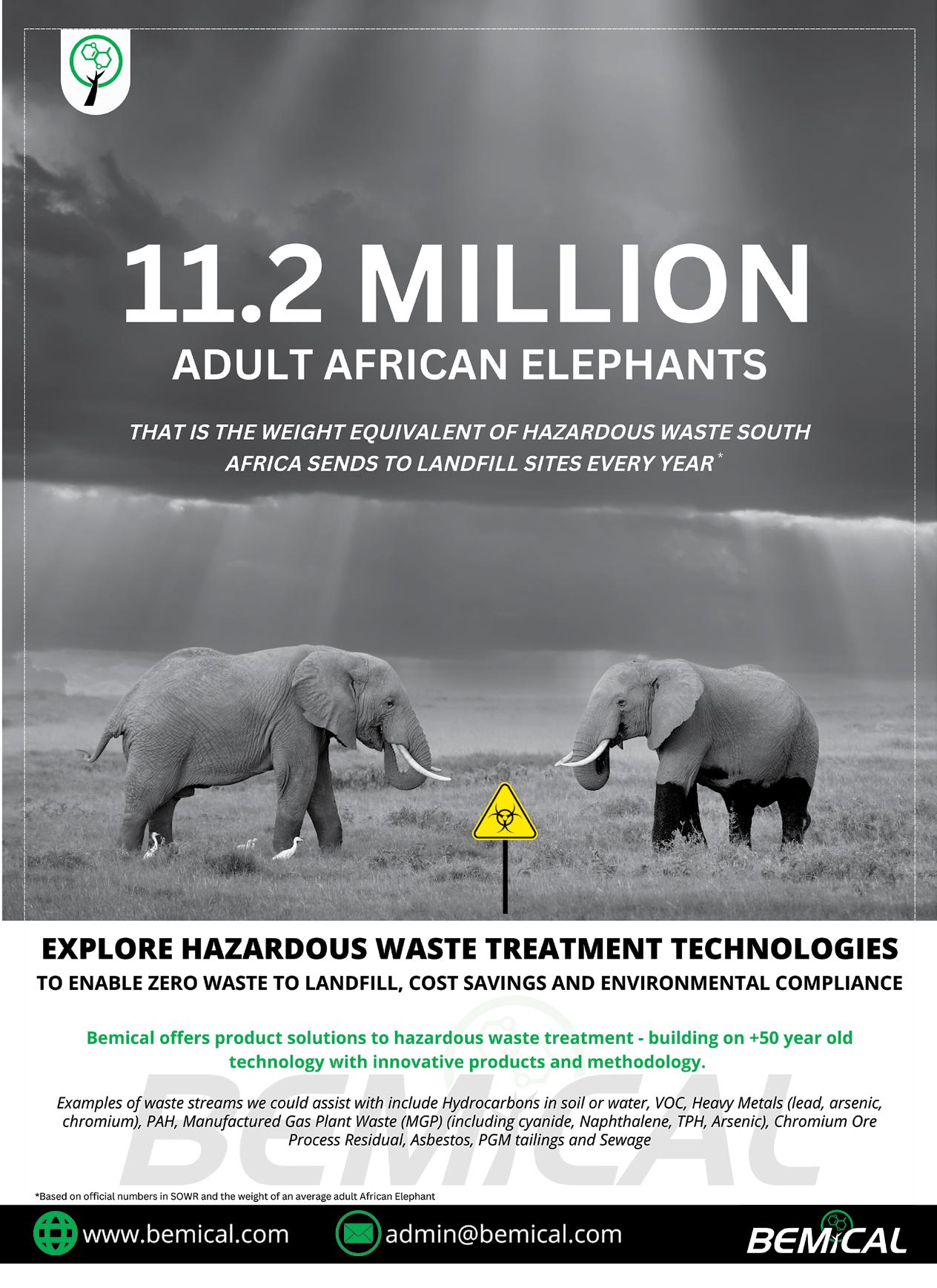
Rethinking hazardous waste management

11-million elephants in the room

Research shows that 92.7% of hazardous waste is landfilled in South Africa. That is a staggering 48-million tons of hazardous waste or the equivalent of 11-million elephants. Eleven-million elephants stacked on top of each other would create a tower that is 36 410km high – almost long enough to reach around the entire earth.
According to the South Africa State of Waste Report 2018, South Africa generates more than 107.7-million tons of waste annually. Of this, 48% or 52-million tons, is classified as hazardous waste that may have a detrimental impact on health and the environment. A total of 92.7% of this is landfilled every year.
To compound matters, South Africa’s dumping grounds are filling up at an alarming rate with some large sites having less than three years of airspace available, says Leon Grobbelaar, the president of the Institute of Waste Management of Southern Africa. Engineering News has recently reported that Johannesburg, Tshwane and Cape Town each have less than 10 years of landfill life left.
Legislators have identified this as a fundamental issue that needs to be resolved, and as such the South Africa Waste Management Strategy 2020 states: “Prevent waste, and where waste cannot be prevented, ensure 40% of waste is diverted from landfill within five years; 55% within 10 years; and at least 70% within 15 years leading to zero waste going to landfill”. A tall order, but a crucial one for our country and environment.
Waste that is not taken to landfill poses possible environmental and human health risks and disasters – the tragic tailings dam failure in Jagersfontein (2022) is an example. In a recent Reuters report, it is noted that South Africa has the highest number of high-risk tailings dams (79) in the 10 countries that were profiled. Quartz Africa asserts that “there are growing calls for the cleaning up of high-risk tailings dams so that the waste can be re-processed and used to fill up mined out operations, thereby reducing environmental hazards.” Mariette Liefferink from Federation for a Sustainable Environment (FSE) warns that in terms of ecological risk, the issue of mining waste is widely recognised as second only to global warming and stratospheric ozone depletion.
A high degree of effort is required to mitigate environmental risks posed by hazardous waste, no matter where that waste currently exists. For this to be achieved requires industry to pursue zero waste
aggressively with landfill technologies from both sides of the buyersupplier relationship.
TREATMENT OF HAZARDOUS WASTE
There are various ways of treating different types of hazardous waste including but not limited to biological, physical/chemical, thermal or disposal. The type of treatment depends highly on the contaminant and the desired result, as not all waste streams are susceptible to all treatment methods. Other factors that influence the choice of treatment method include the conditions of contamination and surroundings, type of remediation required (destruction, separation or containment), operational intensity, capital requirements, relative costs, reliability of outcome and the time window.
Treating hazardous waste is by no means an easy feat, and much more work is needed to develop solutions for waste streams that currently have no treatment options. Combining +50-year-old principles with innovative product technology, Bemical delivers solutions to hazardous waste streams that are based on the most efficient methods in biological and physical/chemical treatment. Waste stream examples that have been managed via these treatment methods include hydrocarbons, volatile organic compounds (VOC), heavy metals such as lead, arsenic and chromium, polycyclic aromatic hydrocarbons (PAH), manufactured gas plant waste (including cyanide, naphthalene, total petroleum hydrocarbons, arsenic), chromium ore process residual, asbestos as well as platinum group metal tailings and sewage.
Bemical’s leadership team includes a head of technical and project operations, an expert with over 20 years of global remediation experience, as well as a chief science officer serving as an associate professor with a distinguished academic track record in chemical and environmental engineering. Bemical has partnered with the Department of Engineering at the University of Pretoria to conduct further research into industry-leading remediation products to better serve the variety of waste streams available.
Contact Jaco Nel at admin@bemical.com or +27 83 363 0315. www.bemical.com
57 WASTE
Johannesburg, Tshwane and Cape Town each have less than 10 years of landfill life left.
The
ENSURING RESPONSIBLY SOURCED FOREST PRODUCTS


For peace of mind in meeting consumers' concerns regarding deforestation and climate changechoose FSC® Chain-of-Custody Certification.
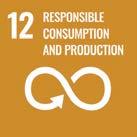

76% FSC® F000100



®

*Globescan Consumer Survey 2021 Timber & forestry visuals courtesy: Merensky Timber
of consumers believe sustainability information on products should be certified by a credible independent organisation.* FOREST STEWARDSHIP COUNCIL® www.africa.fsc.org
Youth can play an important role in DEVELOPING A GREEN ECONOMY

 BY THE DEPARTMENT OF FORESTRY, FISHERIES AND THE ENVIRONMENT
BY THE DEPARTMENT OF FORESTRY, FISHERIES AND THE ENVIRONMENT

ost people are aware that climate change is no longer something that will happen in future. It is a lived reality. For South Africans, reality has hit in the form of extreme weather events, such as devastating floods, and prolonged droughts resulting in untenable water shortages in metropolitan areas such as Cape Town and Nelson Mandela Bay. These events are the new norm for millions of people. They can be linked directly to climate change, and the only way for people to survive is to adapt, which requires technology and the development of new skills.
The Intergovernmental Panel on Climate Change, in its Working Group reports released in 2022, made it clear that global development pathways must become more climate-resilient – and that the choices made by society now are critical. With increasing global warming, losses and damages will increase and additional human and natural systems will reach adaptation limits.


It is imperative that South Africa continues its efforts to move towards a green economy, which is regarded as an effective way to achieve equitable, sustainable prosperity that combines economic development and social inclusion within one-planet limits. This means reaching beyond environmental care to create prosperity for all, as societies value nature, tackle inequality, make their current activities green, invest in sustainability and define meaningful ways by which to govern.
In 2021, South Africa made a very ambitious contribution to the global effort to address the climate crisis in the form of its updated Nationally Determined Contribution affirming the economic opportunities offered by a low-carbon development pathway given the country’s endowment of natural resources, including wind,

sun and minerals key to the global green economy. The National Determined Contribution also emphasises the importance of a just transition – addressing South Africa’s development challenges, ensuring that there is a smooth and prosperous transition for workers and communities from our current coal-based economy to a future zero-carbon economy, and making maximum use of economic opportunities, including green industrialisation.
Because the youth are such an integral part of the future, the Department of Forestry, Fisheries and Environment has in the past two years hosted the Driving Force for Change youth initiative through which youth entrepreneurs who are committed to implementing sustainability principles into their business models can apply for financial support. The youth entrepreneurs are also provided with much-needed business acumen skills training interventions to support them in strengthening their respective business ventures.
This initiative is a recognition of the fact that young people are aware of the role which they want to play in addressing challenges such as unemployment, climate change and social inclusion by making a meaningful contribution to support our country’s transition efforts.
The eagerness of the youth to be involved in rebuilding and growing the economy and society post-Covid-19 is evident from the interactions between young people and government. One of these was the 2020 Youth Environment and Sustainability Dialogue where more than 100 young South Africans presented a wide range of ideas including that a green recovery mechanism needs to be genderand youth-responsive and that the renewable energy, transportation and waste management industries are prioritised in the country’s green recovery strategy. The climate crisis, they said, needs to be dealt with greater urgency.
The young people asked for greater access to the Green Climate Fund to enable them to implement ideas they had for a more environmentally friendly society. This included promoting access to, and projects of, the world’s largest fund created by the United Nations Framework Convention on Climate Change to assist developing countries adapt to and mitigate climate change.
59
It is imperative that South Africa continues its efforts to move towards a green economy.
Although youth have traditionally led the fight for justice and inequality, the fight in recent years has changed to halting climate change, and helping to find fresh, innovative and transformative ideas to utilise in the shift to a green economy in which all the actions taken are done in a sustainable manner – a manner that will contribute to a better world for all.
YOUTH
DQS Academy

Based on the same customer focused service excellence approach that we operate within our certification division, DQS Academy is an accredited training provider that offers training to suit a variety of needs in a range of ISO standards.
professional level related to ISO standards in IT Risk, Risk Management, Business Continuity Management, Food Safety and Energy Management, as well as other key business sector standards.
Choose from a range of short courses at varying competencies in Safety, Health, Environment and Quality as related to ISO 45001, ISO 14001 and ISO 9001 as essentials for a business, SHE and Environmental management to other short courses facilitated at a
Awareness/ Facilitation/ Implementation/ Auditing
ISO 9001:2015 Quality Management
ISO 14001:2015 Environmental Management
ISO 45001 Occupational Health And Safety
ISO 22000:2018 Food Safety Management
ISO 31000/ ISO 31010 Enterprise Risk Management
ISO 50001 Energy Management
ISO 55001 Asset Management
ISO 22301 Business Continuity Management
FSSC 22000 Food Safety System Certification
ISO 39001 Road Traffic Safety Management
ISO 37001 Anti Bribery Management
ISO 27001 Information Security Management

ISO 22716 (GMP) Good Manufacturing Practice
ISO 28001 Supply Chain Security
Ethical Trade Auditing and
Specialised Risk Assessment & Analysis Modules
Asset Management Principles and Applications
FMECA/ Failure Mode and Effects Criticality Analysis
HIRA/ Hazard Identification and Risk Assessment
SWIFT/ Structured What If Techniques
HAZOP/ Hazard and Operability Study
Bow T ie Risk Assessment/ Analysis
Baseline Risk Assessment
Hazard Identification
HACCP and many more ...
Our seasoned and experienced trainers will provide you with value added tuition across a range of business focused ISO standards preparing you at either at an introductory overview, implementation or internal audit level of competence to be able to usefully apply an ISO standard within your business operation. Various
eLearning trainings including, GRI, ESG & AccountAbility's: AA1000 courses.
many more...
Phone: +27 (0) 11 787 0102 Email: academy.sa@dqs.de www.dqsacademy.co.za
Simply leveraging Quality.
In everything we do, we set the highest standards for quality and competence on every project. As a result, our actions become the benchmark for our industry but also our own guiding principle, which we renew every day.
We consider ourselves important partners of our customers, with whom we work at eye level to achieve sustainable added value. Our goal is to give organizations important value-adding impulses for their entrepreneurial success through the simplest processes, as well as the utmost adherence to deadlines and reliability.



Our areas of expertise serve your success



Our core competencies lie in the performance of certification audits and assessments. This makes us one of the leading providers worldwide with the claim to set new benchmarks in reliability, quality, and customer orientation at all times.
Our audits, we create more security and higher process quality across all industries. Our work ranges from the certification of management systems to audits but not limited to to medical devices, information security or sustainability.

ISO 45001
ISO 27001

ISO 20000-1
FSSC 22000
IATF 16949
ISO
ISO
ISO
TAPA
Certification
ISO 9001
Certification
ISO 14001
Certification
Certification
Certification
Certification
Certification
Certification
ISO
TISAX®
EN
13485
22000 Certification
22301 Certification
37001 Certification
Report Assurance
Sustainability
Certification
Our focus: Certification and assessment 2500+ Auditors 63.000+ Certificates 80+ International Offices Company Profile Food & Consumer Quality Management Sustainabilty Information Security Medical Devices Integrated Management Systems Phone: +27 11 787 0060 Email: info.sa@dqs.de www.dqsglobal.com
CLEAN ENERGY WORK SHIFT
Under a net-zero emissions pathway, the transition could create 14-million new jobs related to clean energy technologies, move around five-million workers from fossil fuels, and require additional skills and training for an estimated 30-million employees, according to the IEA’s landmark report, Skills Development and Inclusivity for Clean Energy Transitions.

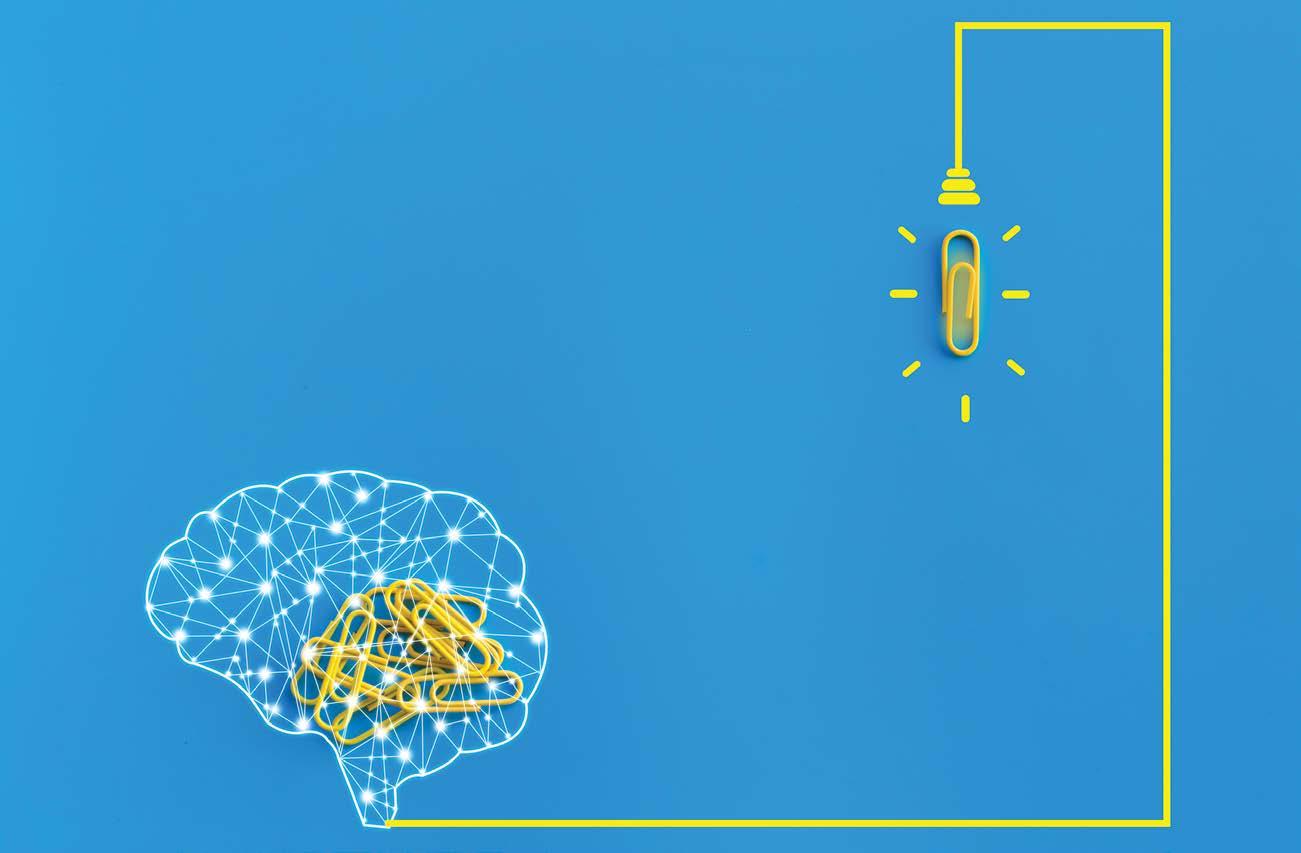 BY INTERNATIONAL ENERGY AGENCY*
BY INTERNATIONAL ENERGY AGENCY*
Changes already underway are behind a significant shift in the global energy labour market, with a little over half of the workforce now employed in the clean energy sector. This trend will only grow more pronounced as demand for skilled clean energy workers accelerates, with opportunities across a wide range of industries.
TRAINING, UPSKILLING AND RESKILLING
Today’s energy workforce is more skilled than global averages, and emerging clean energy industries will require an even higher share of skilled employees. Often this will necessitate the development of completely new programmes of education, certification and vocational training. Equally, targeted upskilling or reskilling training programmes for the existing workforce will be critical.
Many traditional energy sectors – notably coal – are experiencing major workforce changes, both through greater degrees of automation as well as global fuel mix trends. Though coal is on the front lines of changes today, in coming years many other sectors will also undergo more significant employment shifts, including oil and gas, heavy industry and road transport. During the transition, maintaining sufficient capacity of skilled workers in these sectors is of strategic importance. Devising the right long-term transition plan can ameliorate these risks. Many of these workers also have energy sector-specific skills that will be needed in clean energy sectors, and capitalising on these skills can help traditional energy firms diversify their portfolio to clean energy technologies.
The IEA’s just-released World Energy Employment report is the first comprehensive data assessment and analysis of the global energy workforce that provides a baseline for policymakers, companies and other stakeholders to help plan for education and training needs. It finds that the energy sector in total employs over 65-million people, which equates to around 2% of global employment in 2019.
The overall employment numbers belie an even more complex situation on the ground, where the skillsets of individual workers can
62 SKILLS
IEA (2022), World Energy Employment
Energy employment by economic sector, 2019.
vary immensely based on industry, job function and region. So even though clean energy sectors are set to grow rapidly over the next decade, companies may face a lack of skilled workers that match the skillsets needed for a project in the region it is located. In some cases, this requires the development of completely new programmes of education, certification and vocational training, while in other cases, it means targeted upskilling or reskilling for the existing workforce.
NEW SKILLS FOR THE FUTURE
Emerging technologies currently account for only a fraction of the energy workforce but are poised for exponential growth in the coming decades. It is equally important to ensure that workers in traditional energy sectors facing decline because of energy transitions are equipped to find new employment in other sectors. Many of these sectors are now experiencing major workforce changes that require accelerated efforts to support employees, including through reskilling and upskilling initiatives.
DIVERSITY AND INCLUSION
For energy transitions to be truly people-centred, the diversity of the energy workforce must be a paramount consideration in policy and programme design for training and skills development. Women are heavily underrepresented in the energy labour force. This marks a decisive wake-up call for course-correction to ensure that the future energy workforce is more inclusive, gender-balanced, and enabling of equal opportunity compared to the energy sector of today. Several initiatives are underway around the world to support this outcome, which target skills training programmes to specific groups, notably women, youth and marginalised communities. Beyond government programmes, several non-profit groups and industry collaborations have put in place innovative programmes designed to ensure that the clean energy workforce is more inclusive than the traditional energy sector.

SKILLS TRAINING
The overriding concern for government officials, policy makers and companies is the lack of a sufficiently skilled workforce to undertake the scale of new projects required for a low-carbon economy. Future growth in clean energy industries is closely correlated with the simultaneous development of a qualified workforce to implement projects. Many governments are investigating the development

of training, reskilling and educational programmes in anticipation of the upcoming changes. The most advanced programmes align energy, industrial, labour and education policies to jointly develop a strategy for energy transitions. Countries that are still in the early stages of their energy transitions have also benefited from capacity building and knowledge exchange with other countries that have longer experiences building out clean energy sectors. Moreover, clean energy skills training programmes are by no means limited to national governments, with subnational initiatives also offering useful examples of successful outcomes for workers.
COAL WORKERS

Driven by market conditions and emissions reduction policies, many countries have seen sharp declines in their coal sectors. Since 2010, an average of 25GW of coal plant capacity have retired globally, mostly concentrated in Europe and North America. The pathway to net-zero emissions will mean even more precipitous declines in coal usage. As a large employment and economic sector in many regions, retraining and regional revitalisation programmes are essential to reduce the social impact of job losses at the local level and to enable workers and communities to find alternative livelihoods.

The coal sector – which is relatively labour-intensive – employs around 6.3-million workers, heavily concentrated in the Asia Pacific region, where the bulk of today’s coal production takes place. The jobs are mostly in mining, but also include the transport, washing and processing of coal, as well as the manufacturing of specialised mining and conveying equipment. Meanwhile, coal power employs two-million people globally, most of whom are informal workers.
For large emerging markets, such as India and South Africa, which still have sizeable coal sectors that employ alot of workers, the task is still more challenging. Nonetheless, actions taken today can prepare workers for a longer-term transition away from coal, including through social dialogue between governments, companies and unions, as well as detailed workforce and skills assessments that can inform future strategies and policies. Several countries globally have begun to undertake these processes and offer good examples to ensure a smooth transition pathway for coal workers.
SOUTH AFRICA
South Africa has undertaken early national engagement on a just transition for its coal industry in a context where coal accounts for 73% of the country’s energy supply and about 1.5% of formal employment. In 2017, the Department of Forestry, Fisheries and the Environment and the Department of Trade, Industry and
63 SKILLS
Today’s energy workforce is more skilled than global averages.
IEA (2022), World Energy
Energy employment in fossil fuel and clean energy sectors, 2019-2022.
Employment
The automotive sector is also poised for a major shake-up.
LOCAL DEVELOPMENT
South Africa introduced the Renewable Energy Independent Power Producer Procurement Programme (REI4P) to stimulate private investment through competitive tenders in green technologies.

From inception (in 2011) to date, it has resulted in over 6GW of new renewables generation capacity, mainly wind and solar. It is estimated that the REI4P has created 18 000 jobs in manufacturing, installation and maintenance. Though construction jobs are usually temporary, the programme also includes requirements for local content that are designed to promote local manufacturing of renewable energy components and support skills development for workers over time. Companies have a contractual obligation to support local socioeconomic outcomes over the lifetime of a project (around 20 years), including for education and skills development.
Projects must demonstrate 40% South African ownership, which enables knowledge sharing between local developers and foreign operators. Several foreign project developers sent a wide array of staff to work in South Africa to cover areas such as negotiations and contract agreements, construction, supply chain development, financing and legal services. Given the limited presence of these specialised skills in South Africa, the implementation of projects led to sizeable levels of knowledge sharing with local firms in the legal, banking, engineering and advisory fields.
In 2015, the government launched the South African Renewable Energy Technology Centre (SARETEC) to develop local green skills in response to the demand created by REI4P. SARETEC was established at the Cape Peninsula University of Technolog, in Cape Town. The institution offers specialised and accredited training for the renewable energy industry. Its courses are designed to address the skills needs stemming from the REI4P, especially as they relate to the long-term operation and maintenance of projects. A slowdown in the REI4P policy implementation has impeded some progress in recent years, however.
Competition, commissioned Trade & Industrial Policy Strategies (TIPS) to carry out a National Employment Vulnerability Assessment (NEVA) to evaluate the impacts that climate change would have on companies, workers and communities along the value chain in the following sectors: coal, metals, petroleum-based transport, agriculture and tourism.
The 2019 NEVA found that South Africa’s coal mining sector, which is highly concentrated among a few companies, employed around 89 000 workers in 2018 and accounted for 20% of mining jobs in the country. That same year, state-owned utility Eskom employed 50 000 workers, while petrochemical company Sasol had 26 000 workers in South Africa. The NEVA identified four main risk factors for the country’s coal value chain, including longer-term risks from abroad that importers reduce demand for South African coal; global efforts to cut coal consumption mount; domestic risks that consumers lower their demand for coal-fired electricity due to an expansion of renewables, as well as efficiency and policies for lower carbon intensity from electricity generation.
To complement the NEVA, the country’s National Climate Change Response White Paper requires the development of a Sector Jobs Resilience Plan (SJRP) for each value chain. The SJRPs aim to assess opportunities to transition these sectors to green jobs and industries as well as to protect vulnerable groups that will be impacted by the changes.
For coal, the SJRP estimated in 2020 that value chain employment is more than 120 000 workers, out of which 80 000 work in coal mining, the largest employment sector. The power generation sector (Eskom) accounts for 12 000 jobs, the petrochemicals sector (Sasol) for 26 000, and small coal truckers for 2 000 jobs. A total of 15% of the workers in the coal value chain are women.
The SJRP framework, in addition to guaging the scale of displacement expected in a region, also offers recommendations for adjustment. It notes various areas for diversification, including in the renewable energy value chain through skills development in the maintenance and repair of renewable generation equipment and the manufacture of renewables generation components and related services. Another area for diversification is beneficiation of coal waste products, which would require skills training and education to transition workers from coal mining and power plants, preceded by a thorough assessment of the potential for ash beneficiation. Lastly, the framework also identifies mine rehabilitation and repurposing as a diversification option.
OTHER SECTORS

The skills of oil and gas workers can be transferable to other energy sectors. For instance, petroleum engineering skills are pertinent to geothermal activities, while chemical engineering skills used in oil refineries are applicable to the production of clean fuels and hydrogen. The offshore petroleum sector’s skills are relevant for offshore wind, carbon capture and storage, and hydrogen. Meanwhile, oil and gas power plant operators, turbine manufacturers and construction workers can apply their skills to clean energy power plants, as well as upgraded technologies to use hydrogen and other innovative clean fuels in the future.
The automotive sector is also poised for a major shake-up as emissions reduction policies increase the uptake of electric vehicles over traditional combustion models. The IEA’s World Energy Employment report estimates 13.6-million people were employed
64 SKILLS
Coal power employs two-million people globally, most of whom are informal workers.
Companies may face a lack of skilled workers that match the skillsets needed for a project in the region it is located.

in road vehicle manufacturing in 2019, accounting for around 2.5% of total global manufacturing jobs. Given that electric vehicles have fewer components and simpler assemblies, EV manufacturing could have a lower labour intensity compared to internal combustion engine (ICE) vehicles. However, when considering the full value chain
of production, including batteries and electric charging infrastructure, EVs could have a comparable labour intensity to conventional vehicles. Still, automobile workers will require support to shift their skillsets from the production of ICE vehicles to EVs, with appropriate consideration to wages and worker displacement.
This article is an excerpt from the report by the International Energy Agency entitled SKILLS DEVELOPMENT AND INCLUSIVITY FOR CLEAN ENERGY TRANSITIONS published in September 2022.
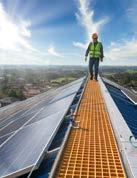



SOLAR TRAINING + INTERNSHIPS FOR 100 SA YOUTHS
GREEN Solar Academy has partnered with KP Cares to offer professional solar training paired with on-the-job experience to technically inclined youngsters across South Africa. The overall objective of the training programme is to skill up participants and expose them to first-job experience so that they can find sustainable employment in the solar photovoltaic (PV) industry. KP Cares is piloting the training in three provinces in the first year which commenced in July 2022. A total of 28 young people were selected for solar training paired with an internship programme. GREEN will facilitate visits to live solar plants so that the students are introduced to typical operation and maintenance (O&M) tasks. Once the work skills programme is complete, possible employment options will include PV mounter for commercial and utility-scale PV installations, or O&M technician with the trainees capable of carrying out tasks such as installation and cleaning of PV modules, wiring and installation as well as technical checks on PV systems. The trainees will be added to the GREEN alumni network where they will have access to other installers and professional exchange to help develop their careers further. Through GREEN, KP Cares aims to upskill and give work experience to 100 solar installers during the course of the project. If you wish to get involved, please visit www.solar-training.org
THOUGHT [ECO]NOMY
GLOBAL GREEN SKILLS REPORT 2022 | LinkedIn Economic Graph | [2022]
We are faced with an urgent need to transition our society to a green economy to address the threat of climate change. How do we apply what we’ve learned from this unprecedented moment to power the enormous transition that needs to happen to meet the climate crisis?
greeneconomy/report recycle
Ryan Roslansky, CEO of LinkedIn, says in the foreword of this report: “Achieving our collective global climate targets is a monumental task and it is going to take a whole-of-economy effort to make it happen. That means we need a transformation in the skills and jobs people have if we’re going to get there. The good news is that we are already seeing a shift to green skills and jobs underway on our platform, which has nearly 800-million members around the world.
“Green talent in the workforce worldwide is rising. The share of green talent increased from 9.6% in 2015 to 13.3% in 2021 (38.5%). Jobs are a critical part of the conversation about achieving this green transition. And rightly so. We expect to see millions of new jobs created globally in the next decade driven by new climate policies and commitments.
“It’s more than jobs – we need to zoom in on the skills that power these jobs. Green skills. We believe real change will come through a skills-based approach to opportunity. We have seen double-digit growth across dozens of green skills over the last five years. The fastest growing green skills are in ecosystem management, environmental policy and pollution prevention. But most green skills are being used in jobs that aren’t traditionally thought of as green – such as fleet managers, data scientists or health workers.”
LinkedIn’s green skills report leverages its unique data and labour market expertise to highlight actionable insights that are crucial to delivering a successful green transition and avoiding potential pitfalls.
65 SKILLS
Global
Green Skills Report 2022
READ REPORT
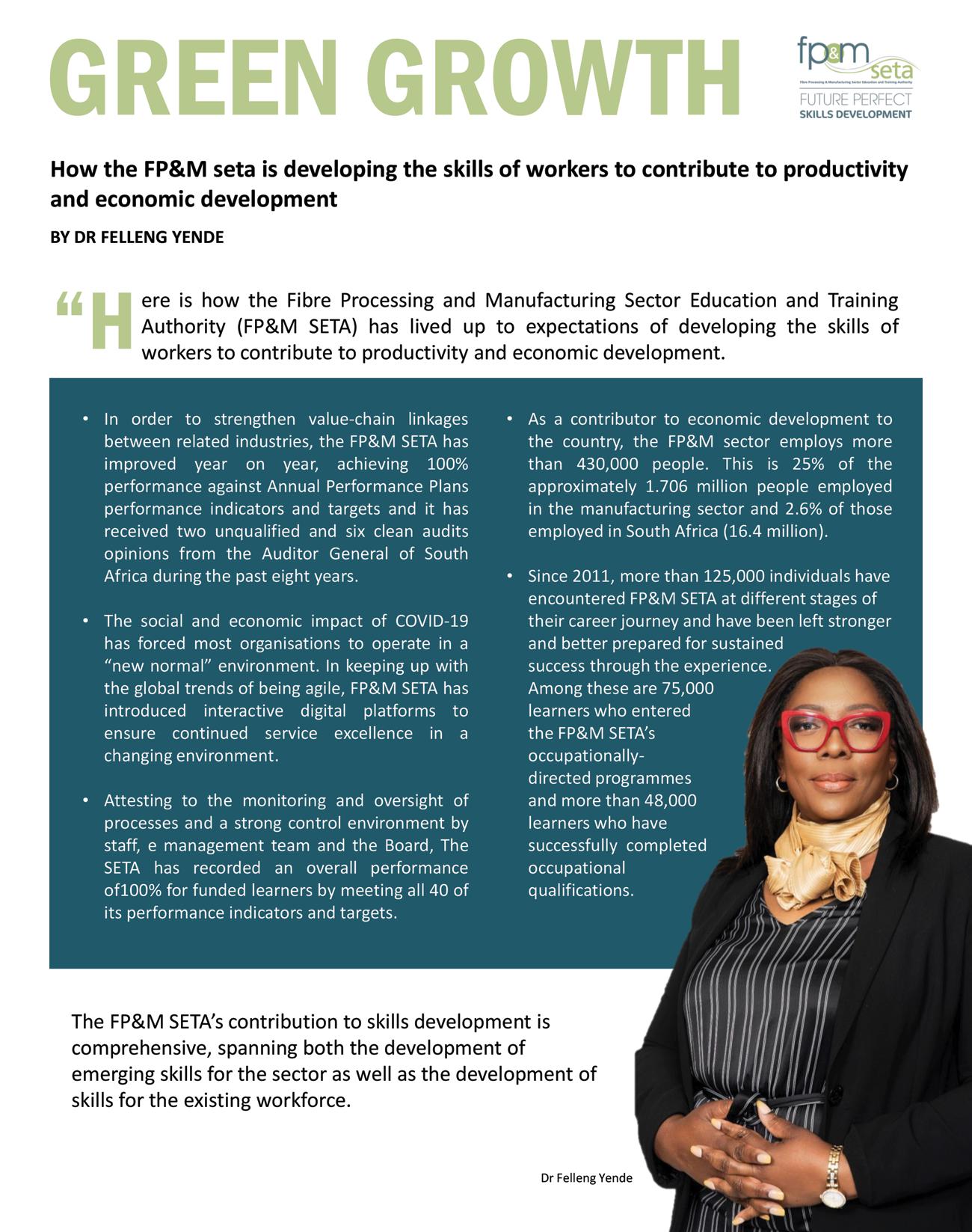
66 SKILLS
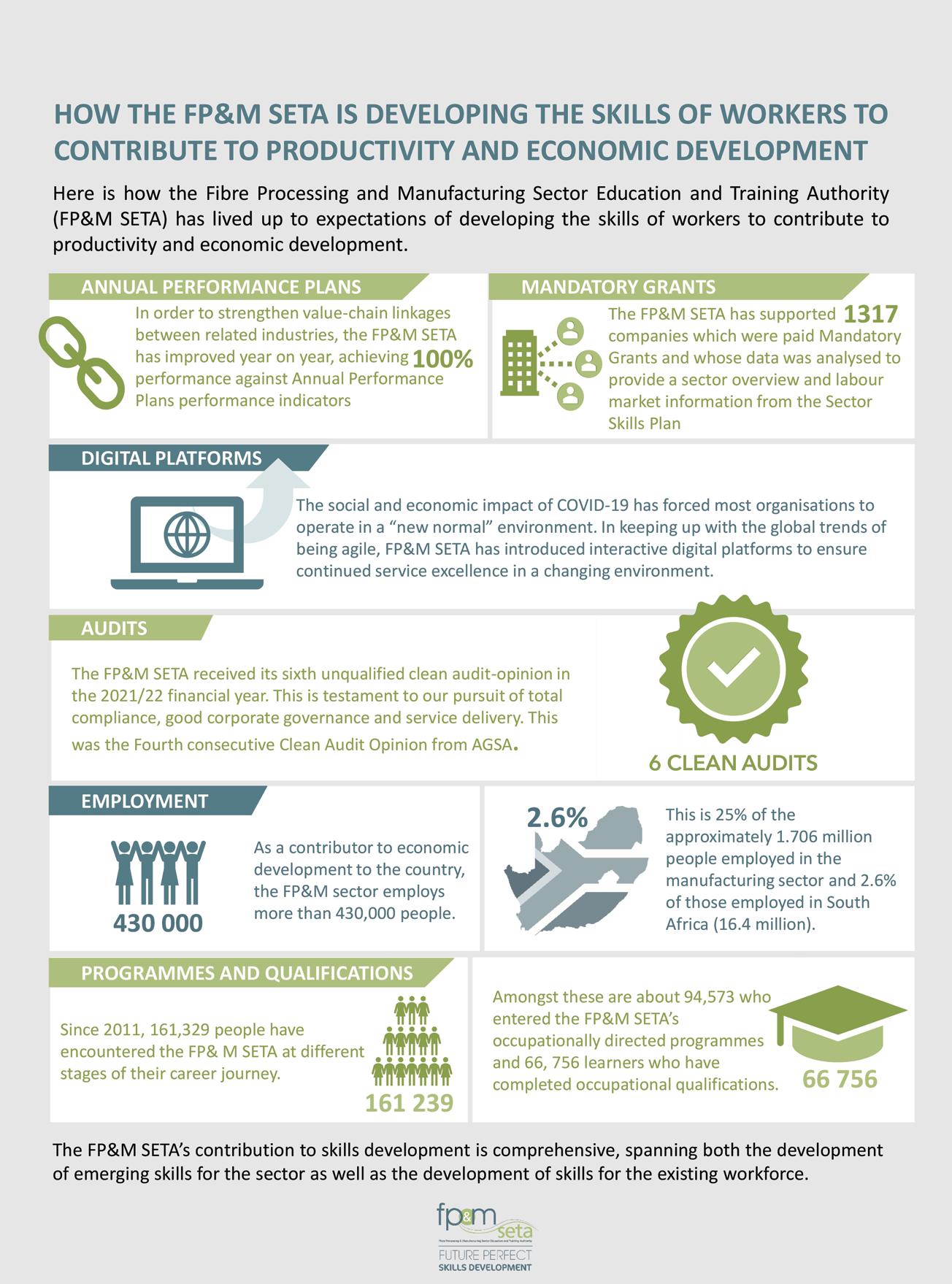
67 SKILLS
Wind Industry Internship Programme reflects THE COUNTRY’S ENERGY SECTOR GROWTH





The second Wind Industry Internship Programme has announced that it will double its placements for 2023 and offer supplementary work-readiness training for the first time. The programme supports the development of specialist skills needed to facilitate the exponential growth of the industry,
BY SAWEA
Funded primarily by the Energy and Water Sector Education Training Authority (EWSETA), in partnership with the South Africa Wind Energy Association (SAWEA), the programme is expected to place 35 interns, selected from over 90 applications, this year. These interns are being placed across approximately 30 renewable energy companies – illustrating a growth of over 100% in just one year.
“We are encouraged by the uptake of this programme and huge increase of placements, knowing that young professionals are being absorbed by our sector and are receiving the mentorship and practical experience that they need,” says Niveshen Govender, CEO of SAWEA.
The Wind Industry Internship Programme (WIIP) provides young professionals who have recently completed a degree or those undertaking graduate programmes, with the opportunity to gain practical work experience in line with their studies or interests, while exposing them to work related to sustainable energy solutions.

This year, for the first time, the programme will include a 10-day workreadiness training segment facilitated by an external service provider that will coach the graduates in the soft skills necessary to enter the workplace, for example, email etiquette, communication, working as a team, etc. While the WIIP provides capacity building for the students, it equally benefits the commercial wind power industry seeking to source qualified students specialised in various professional fields.
“Equally important, the programme is recognised as a major contributor to social, environmental and economic security in the country,” explains Govender.
The demand for qualified and skilled talent is growing and the South African industry, like its international counterparts, needs a rising pool of qualified candidates to draw from.
SAWEA anticipates jobs in manufacturing, logistics, finance, construction, and operational phases becoming available as Bid Window 5 and Bid Window 6 projects come online. These comprise of professional services, business services and sales. Requirements include engineering, project management and development as well as skills in environmental authorisations, amongst others. Direct jobs can already be seen through the employment drives that have been undertaken by various companies operating in the renewables sector. The wind industry has diverse skills requirements; with the focus areas of this programme being on the following broad skills areas:
• Engineering: energy, electrical, mechanical, chemical, industrial, civil, etc
• Natural sciences and mathematics: physics, chemistry, mathematics, statistics, environmental sciences
• Administration and management: accounting, business administration, finance, procurement, human resource management
• Social sciences/humanities: economics, gender, international relations, communication, population studies, law
• Information technology: computer science, management information systems, multimedia web design, as well as software engineering.
68
to support the country’s growth.
Niveshen Govender, CEO of SAWEA.
SKILLS
Direct jobs can already be seen through the employment drives that have been undertaken by various companies operating in the renewables sector.
By the people, FOR THE PEOPLE
Direct 2 The People is at the cutting edge of green tech where we deliver sustainable, mixed-use, closed-loop, agri-living communities to developing countries throughout the world.

Our housing communities will be net-zero carbon, passive homes using zero energy from the grid. Such buildings will be light on the land, replacing concrete foundations with composite ground screws. Not having to rely on the setting for the concrete, the ground screw can immediately be loaded with our fibre glass reinforced pultrusion (FRP) composite lightweight, high-strength frame.
The EEZI frame not only gives the structure the strength to withstand hurricanes, earthquakes and tornados but allows the fully complete modular floor, wall and roof to be inserted into the frame onsite. This eliminates the use of heavy equipment and cranes on site.
The EEZI hemp floor, wall and roof, all external and internal cladding, electrical wiring and conduits for fibre optic, television cables and airflow throughout the structure are assembled at the factory.
The factory-finished structure is inserted into the EEZI lightweight composite frame which adds extreme rigidity and strength to it. This frame is designed fit-for-purpose for such building for the specific site where it is constructed. The hemp walling system is a net-zero carbon modular walling system which meets the requirements set by the passive building standards.
building. Due to the factory finished floor, wall, roof and pods, a 65m² house can be completed in one day on site.
The EEZI thermal modular alternative building system excels in its thermal and acoustic performances as well as fire rating. This walling system is alive, breathes and absorbs CO2 gas emissions over the entire life of such building. Hemp walling systems have been in existence for hundreds of years and have stood the test of time.
In addition to these achievements, the buildings are 100% airtight, thus ensuring that we eliminate any airflow containing water vapour which causes rot and mould.
This unique alternative building system achieves these characteristics as the system uses no traditional building elements. These are sand, stone, concrete, cement, bricks, blocks, steel, aluminium, wood, glass, wooden trusses, cement roof tiles and gypsum ceilings.
All modular separate toilets, showers, baths and vanity glass are delivered to site completed in their predetermined position in the
PEOPLE NOT POLITICS POLLUTION POLL
This ground-breaking alternative building system is combined with our Direct Art of Living model, which includes an economic methodology that can contribute to the communities’ wellbeing through the Direct 2 The People community way of life, allowing for the following savings in capital and living costs:
• Capital cost of buildings reduced by 30%
• Energy and electrical cost reduced by 75%
• Water use reduced by 64%
The biggest saving will not only be the exclusion of rampant inflation but also in lowering the cost of living to between 40% and 60%.
This community agri-living model is the future of smart living, where production takes place at the place of consumption by the local community resulting in food being produced “by the people for the people”.

Direct 2 The People believes that the Fourth Industrial Revolution (4IR) will see the uprising of the people, where the people’s voices will be heard. Companies and shareholders polluting the planet will be judged by people rather than politics. Those on the list of polluters will be boycotted and immediately feel the financial losses of polluting.
We are now able to track all polluters in a real-time basis, making it possible to reveal this information to the discerning public so they can decide whether to support and purchase goods from polluters. Certification standards will regulate products and goods in terms of pollution.
For this very reason, Direct 2 The People is launching the EEZI thermal modular composite building system in Q1 of 2023.

753 0041 info@direct2thepeople.com
Due to the factory finished floor, wall, roof and pods, a 65m² house can be completed in one day on site.
064



































































WorldWetlandsDay.org CALL CENTRE: 086 111 2468 | WEBSITE: www.dffe.gov.za JOIN #GenerationRestoration #ForWetlands #goodgreendeeds for wetland restoration It’s time 02 February is Wetlands Day More than 35% of natural wetlands have been lost in the last 50 years. Your choices, your voice and your actions can trigger a restoration trend.

























































 BY THE DEPARTMENT OF FORESTRY, FISHERIES AND THE ENVIRONMENT
BY THE DEPARTMENT OF FORESTRY, FISHERIES AND THE ENVIRONMENT



































 BY WEBBER WENTZEL*
BY WEBBER WENTZEL*



 BY SRK CONSULTING
BY SRK CONSULTING















 BY IDTechEx
BY IDTechEx
















 BY LUX RESEARCH*
BY LUX RESEARCH*





























































 BY THE DEPARTMENT OF FORESTRY, FISHERIES AND THE ENVIRONMENT
BY THE DEPARTMENT OF FORESTRY, FISHERIES AND THE ENVIRONMENT












 BY INTERNATIONAL ENERGY AGENCY*
BY INTERNATIONAL ENERGY AGENCY*



















































































